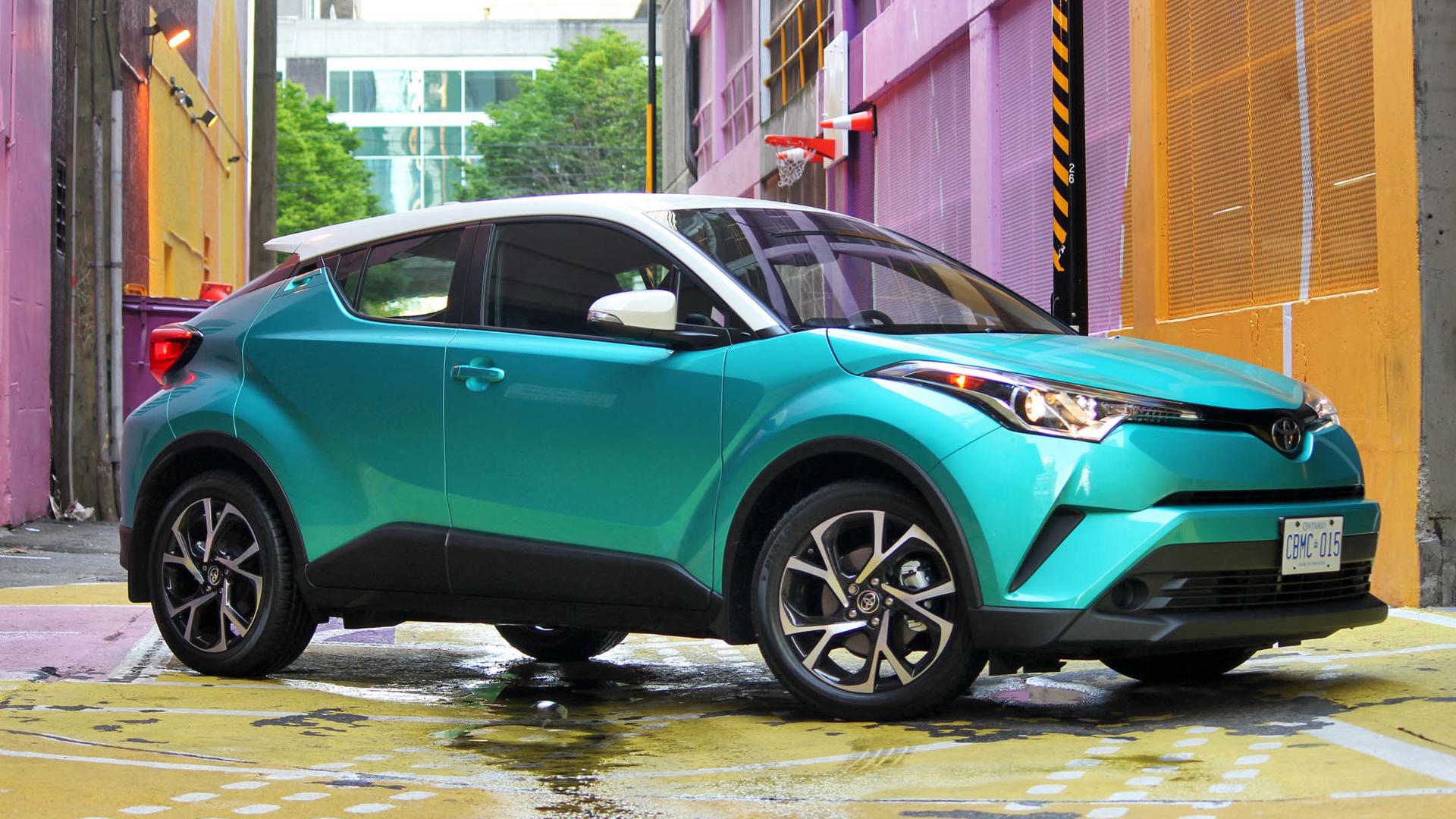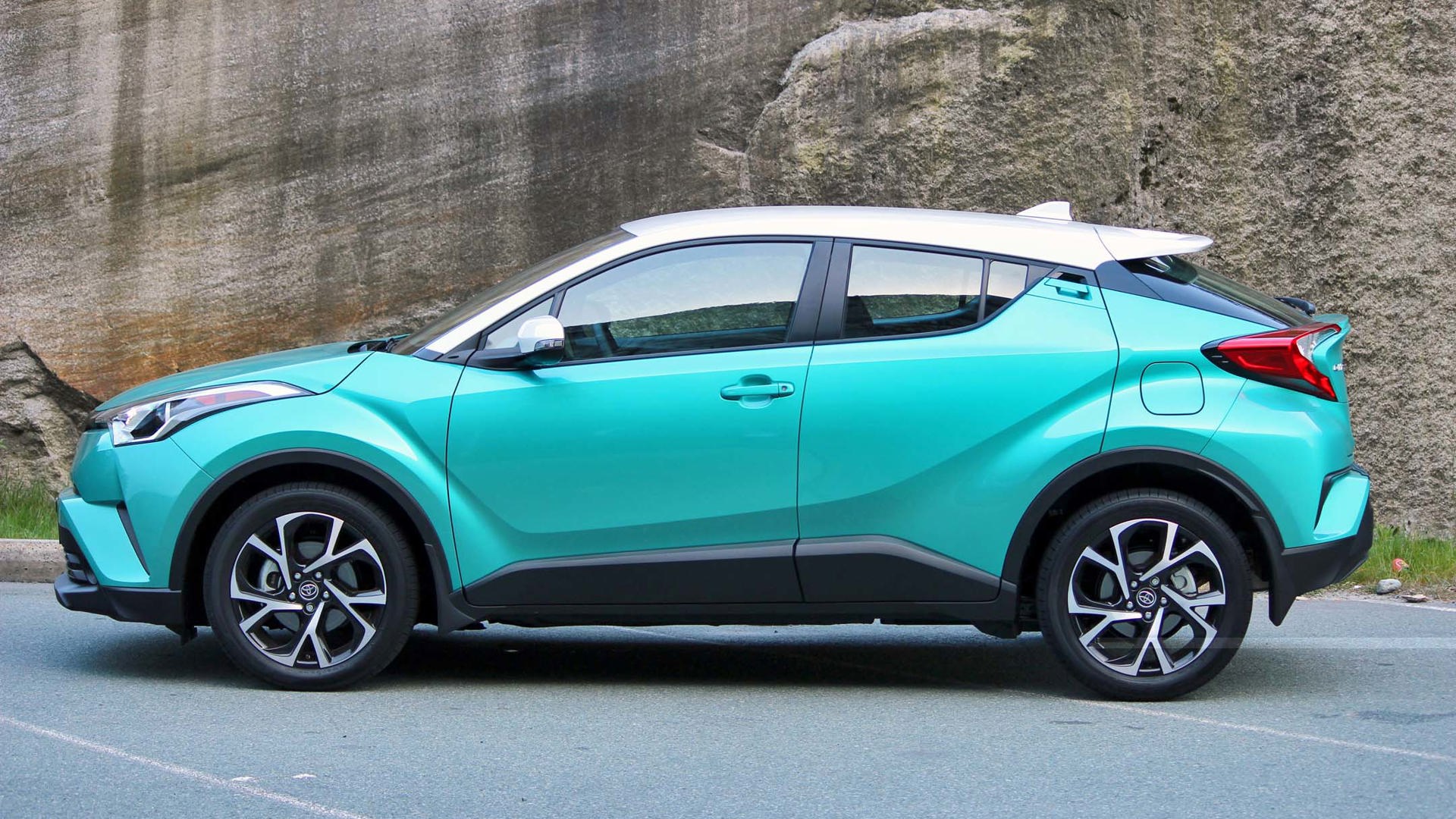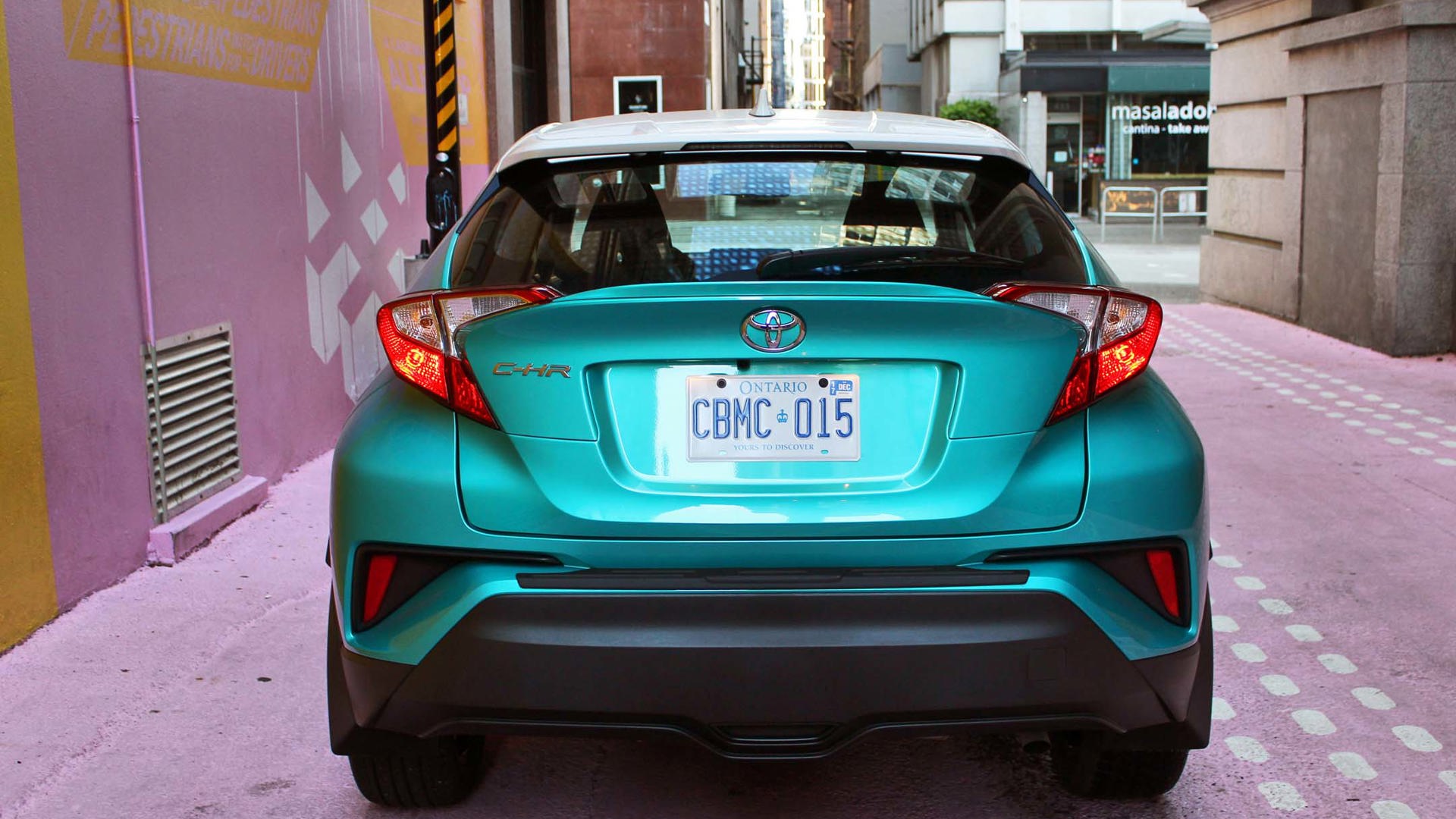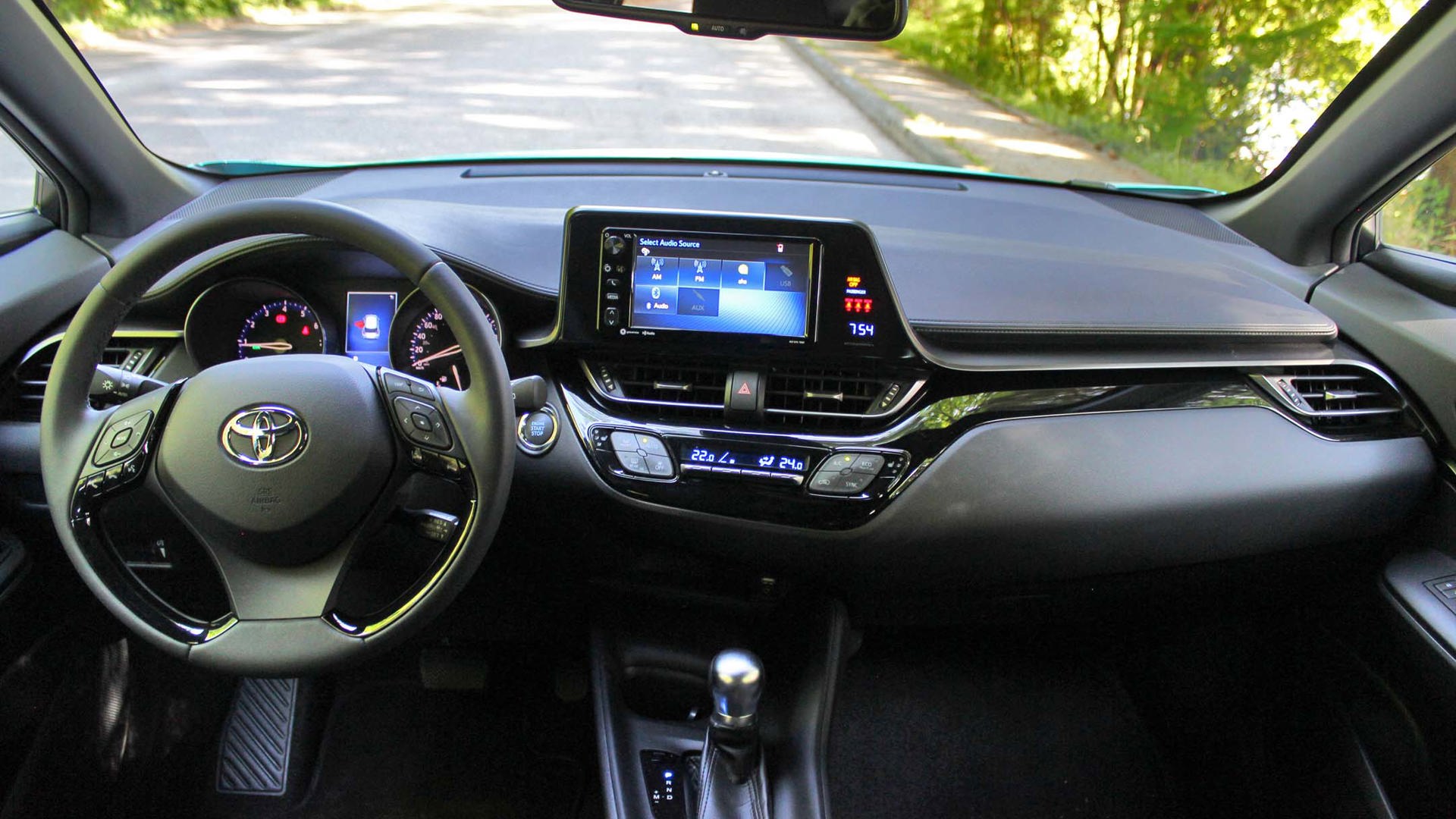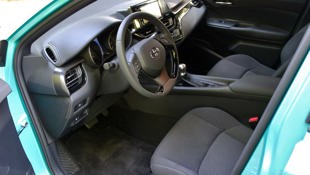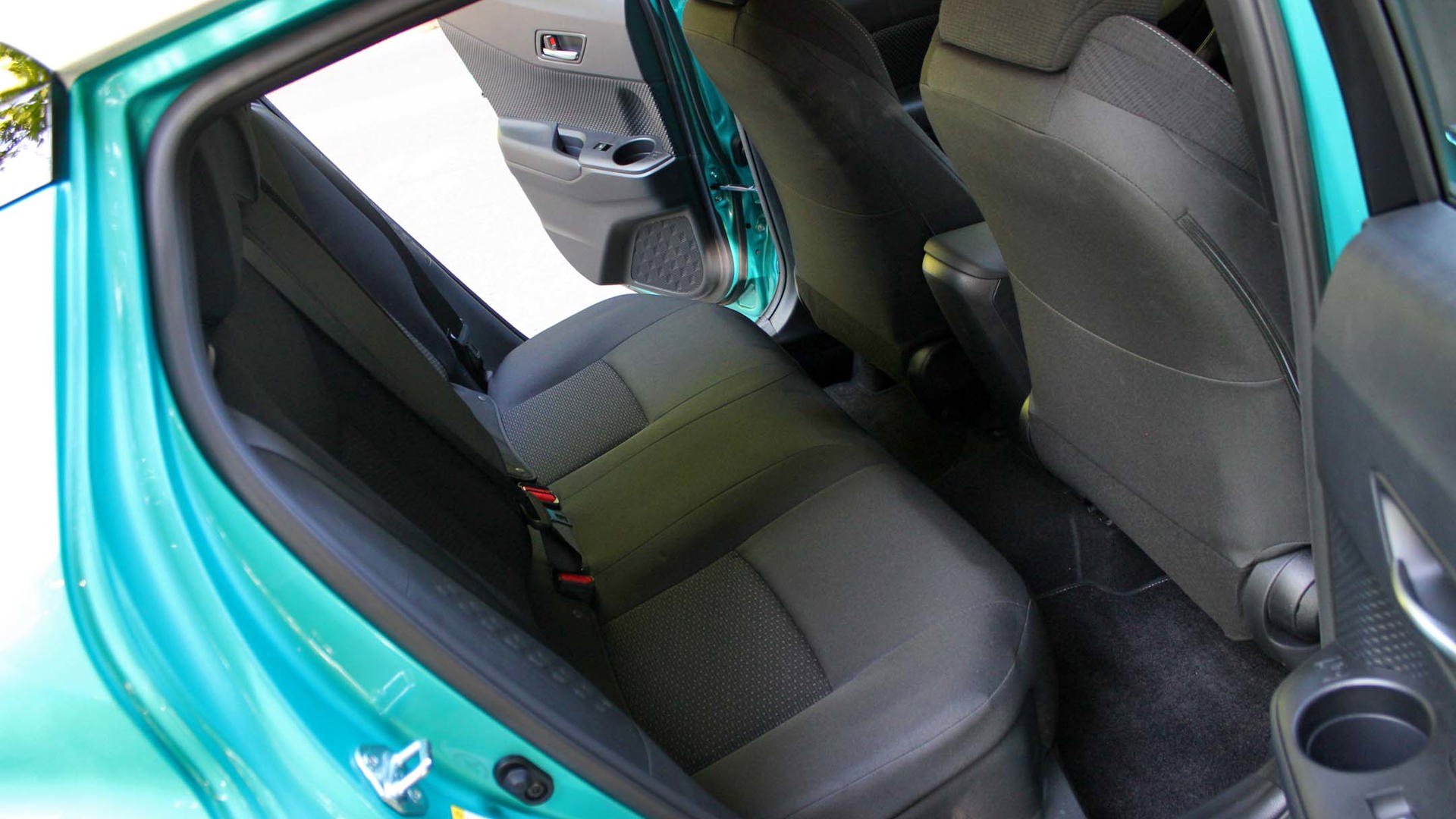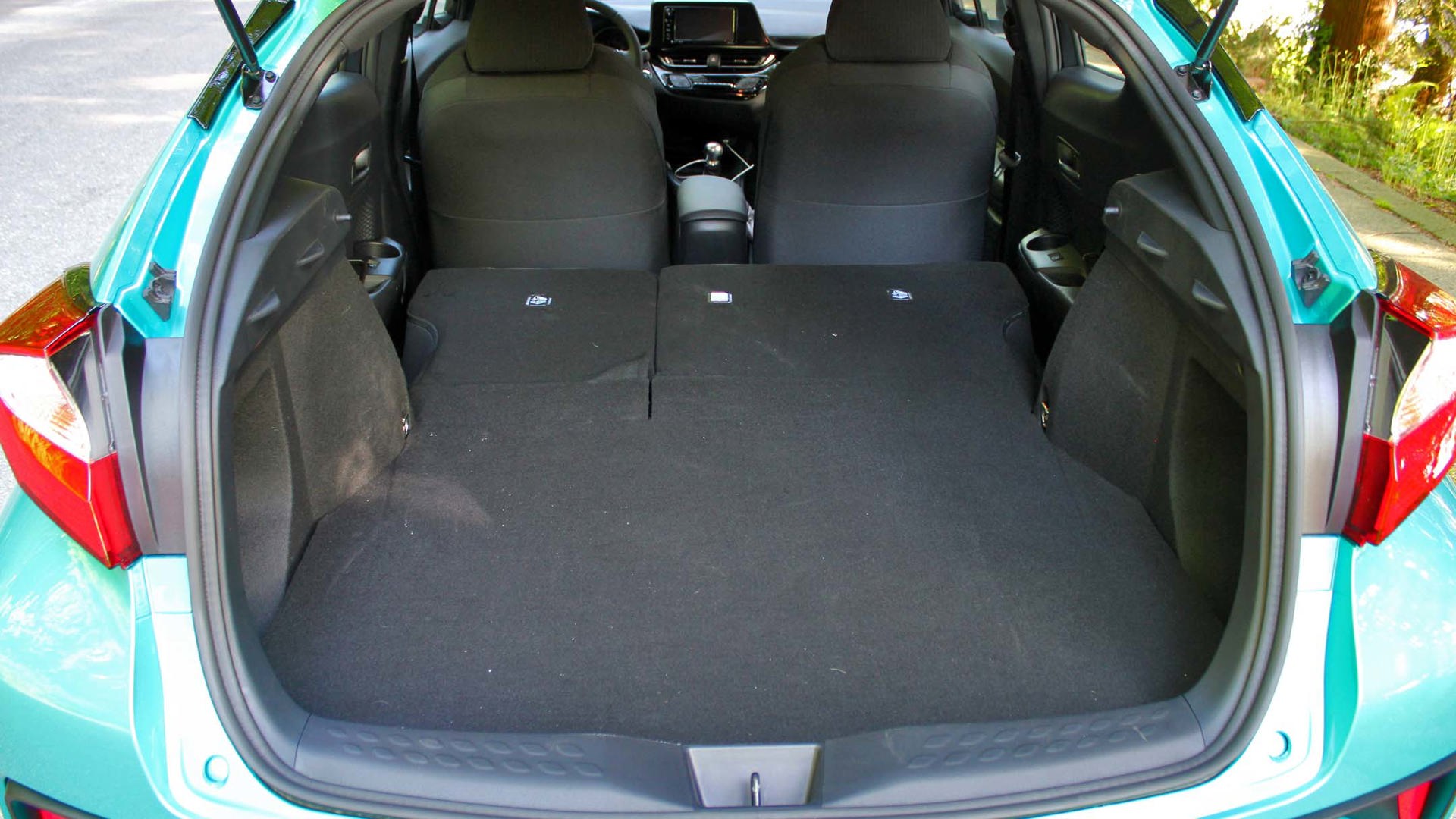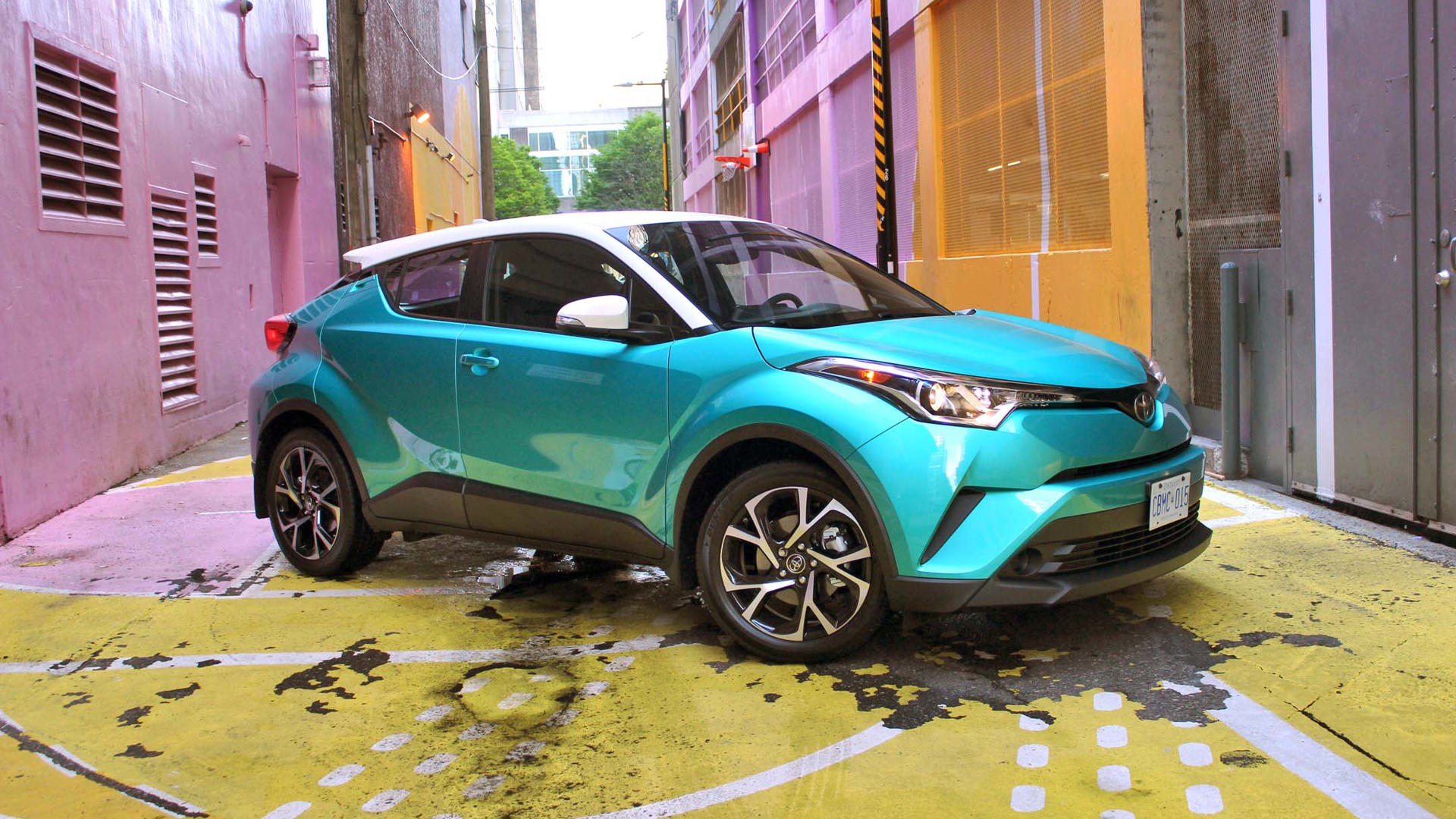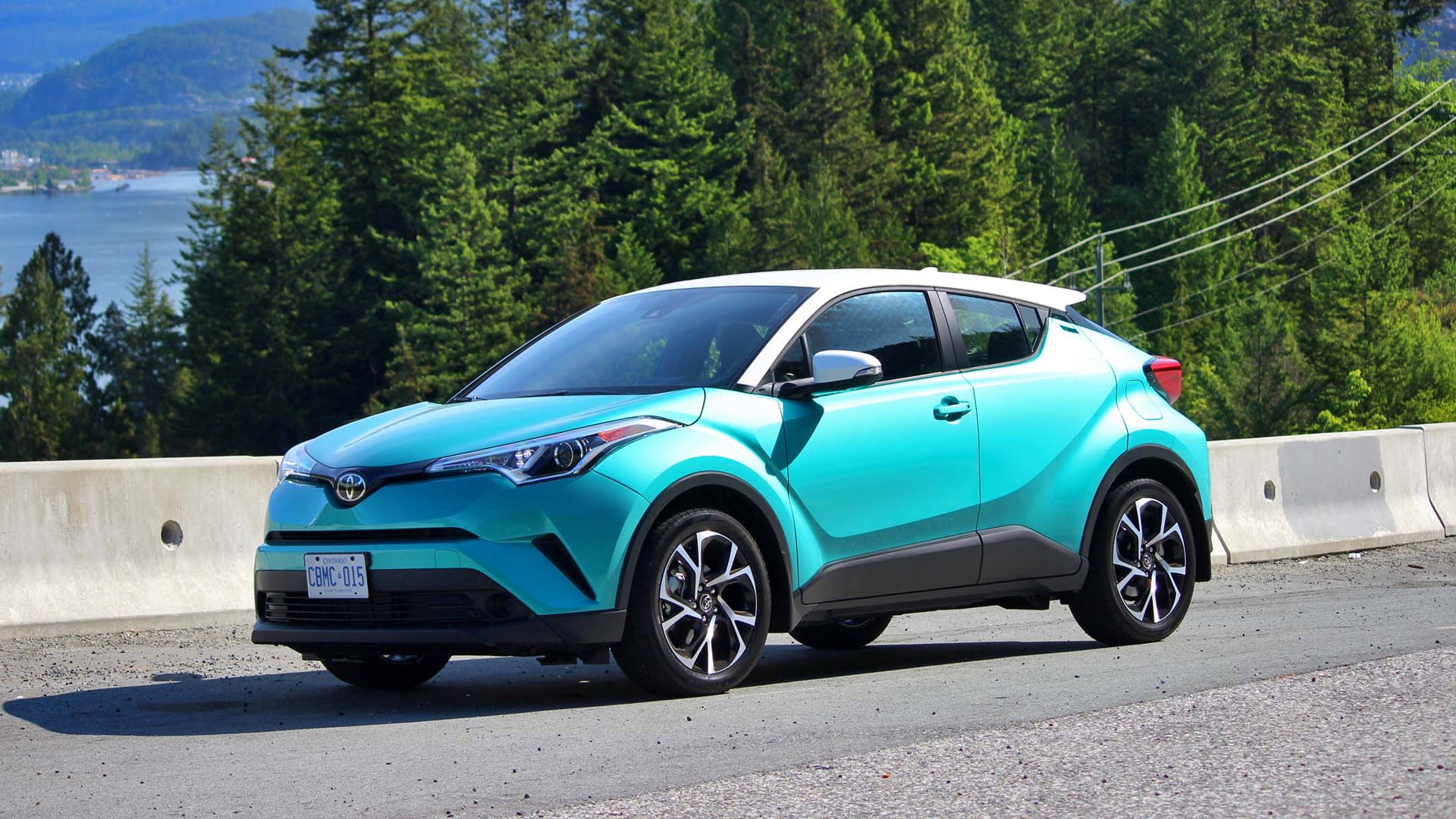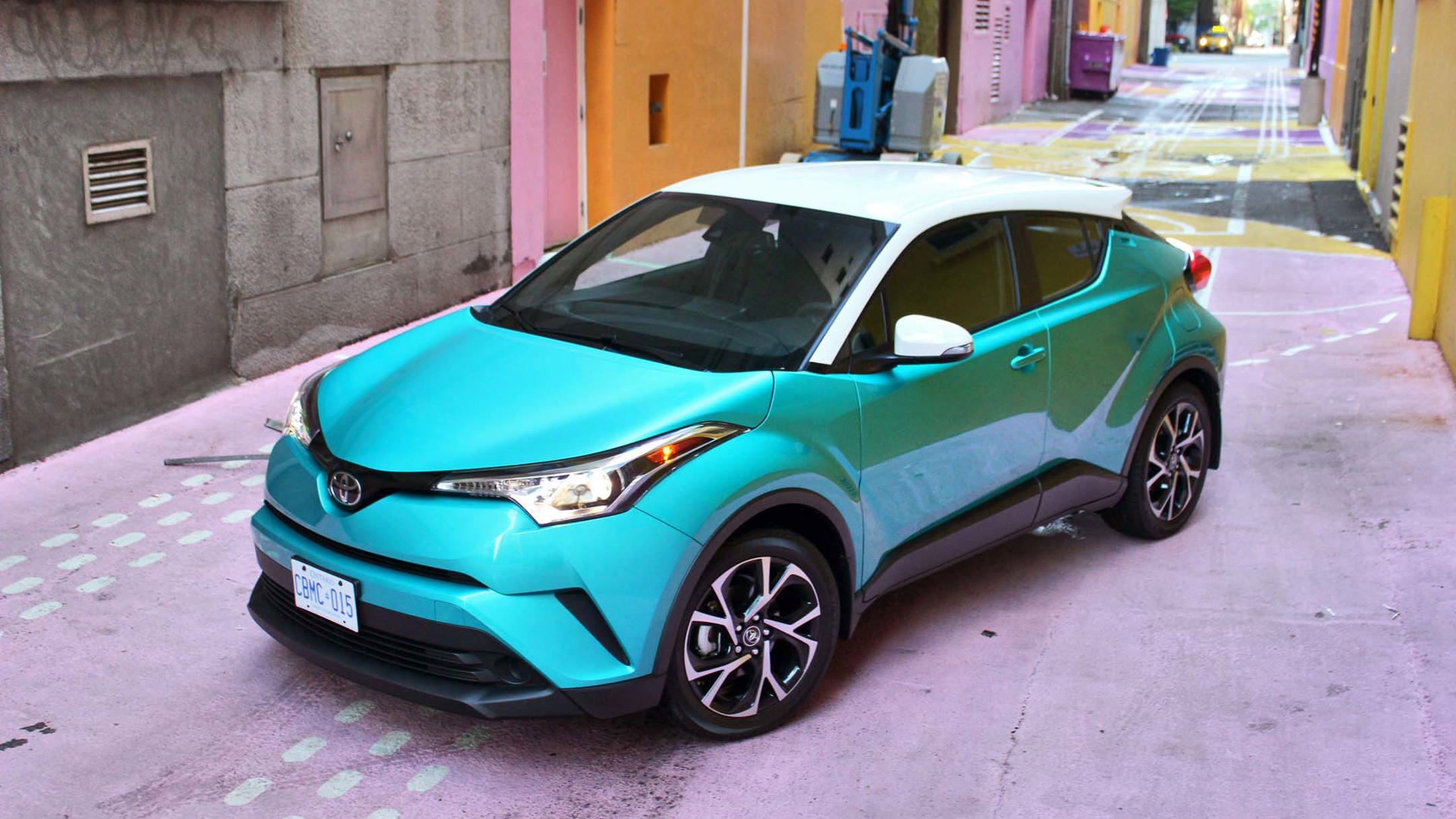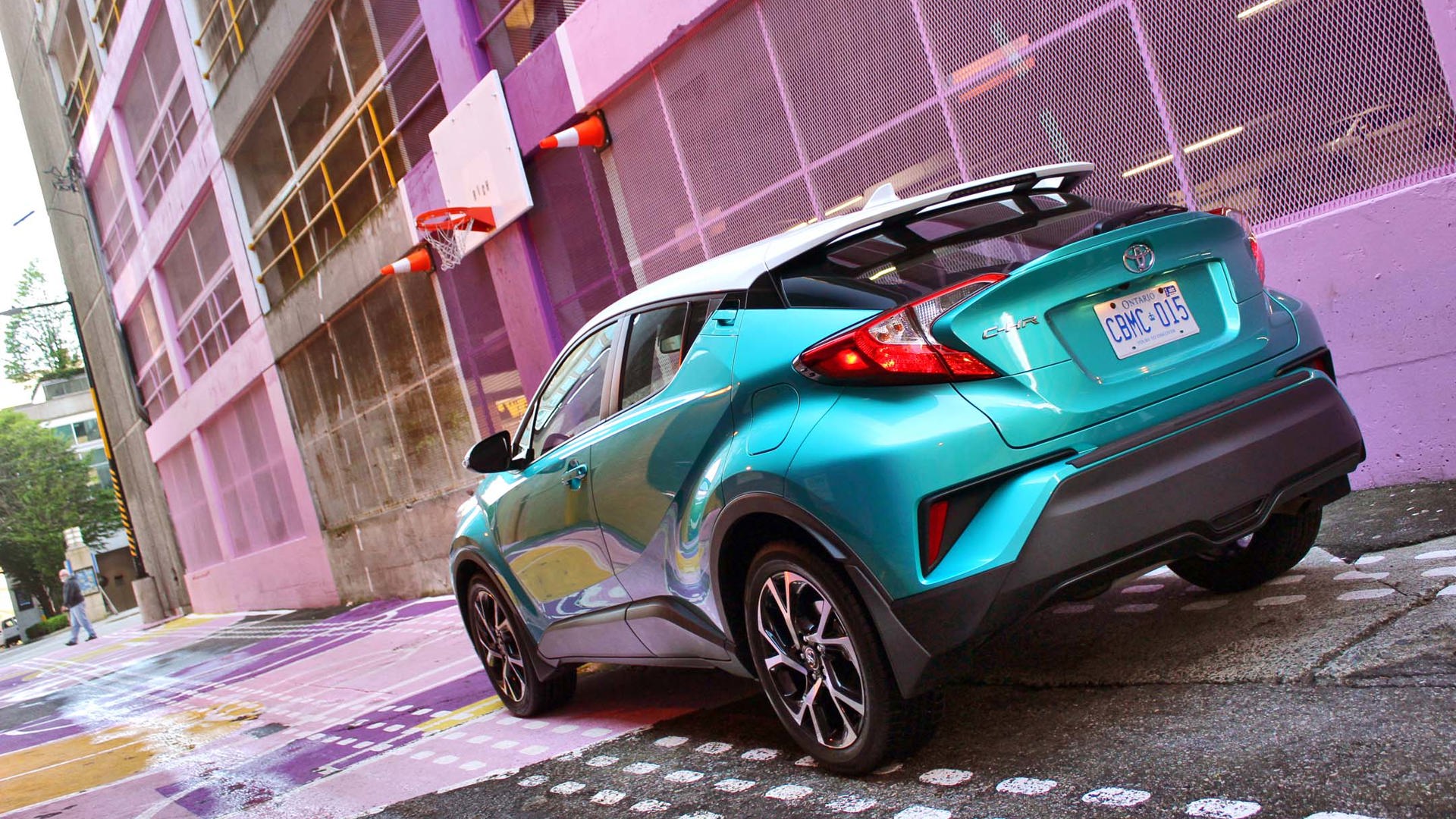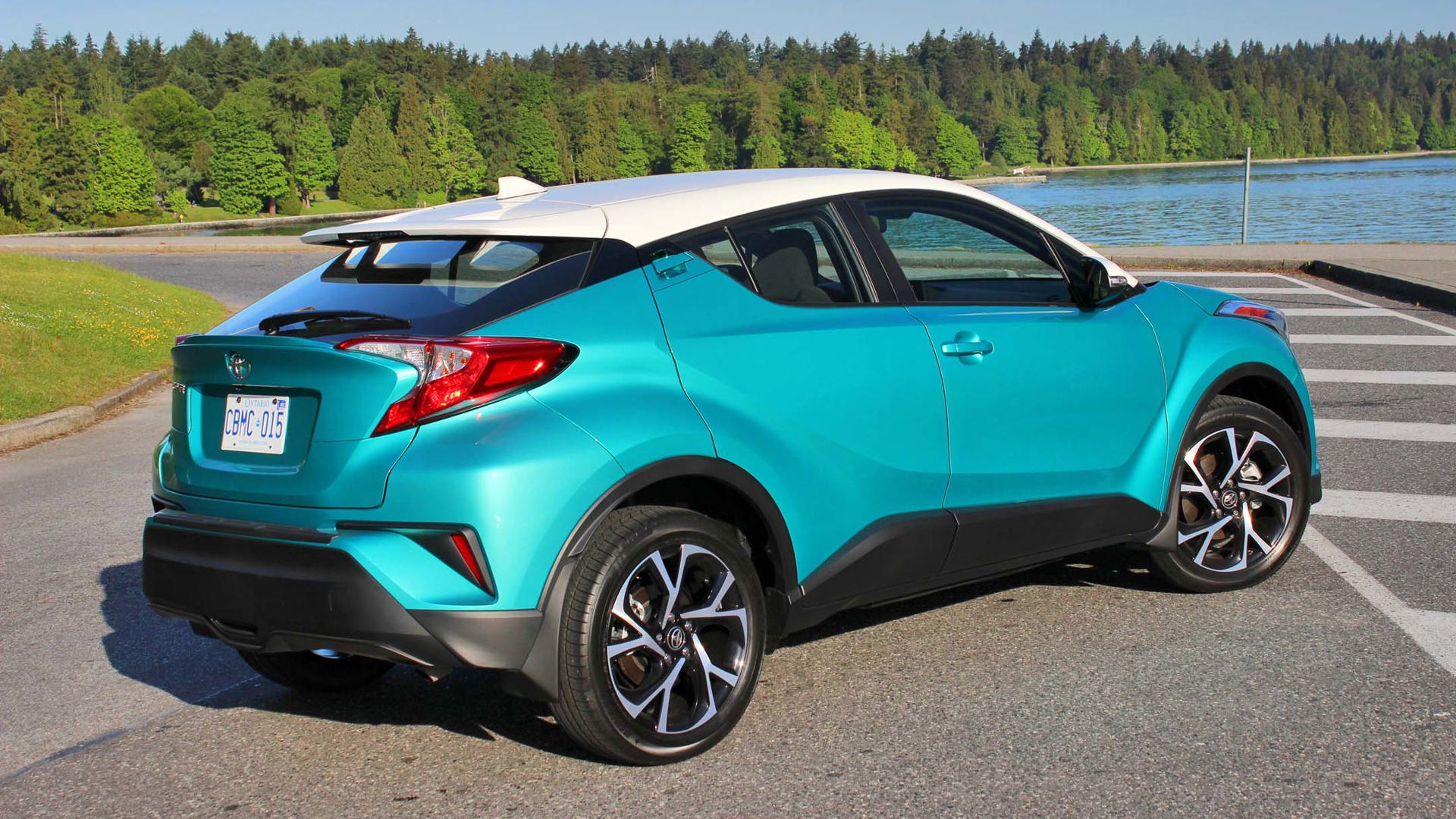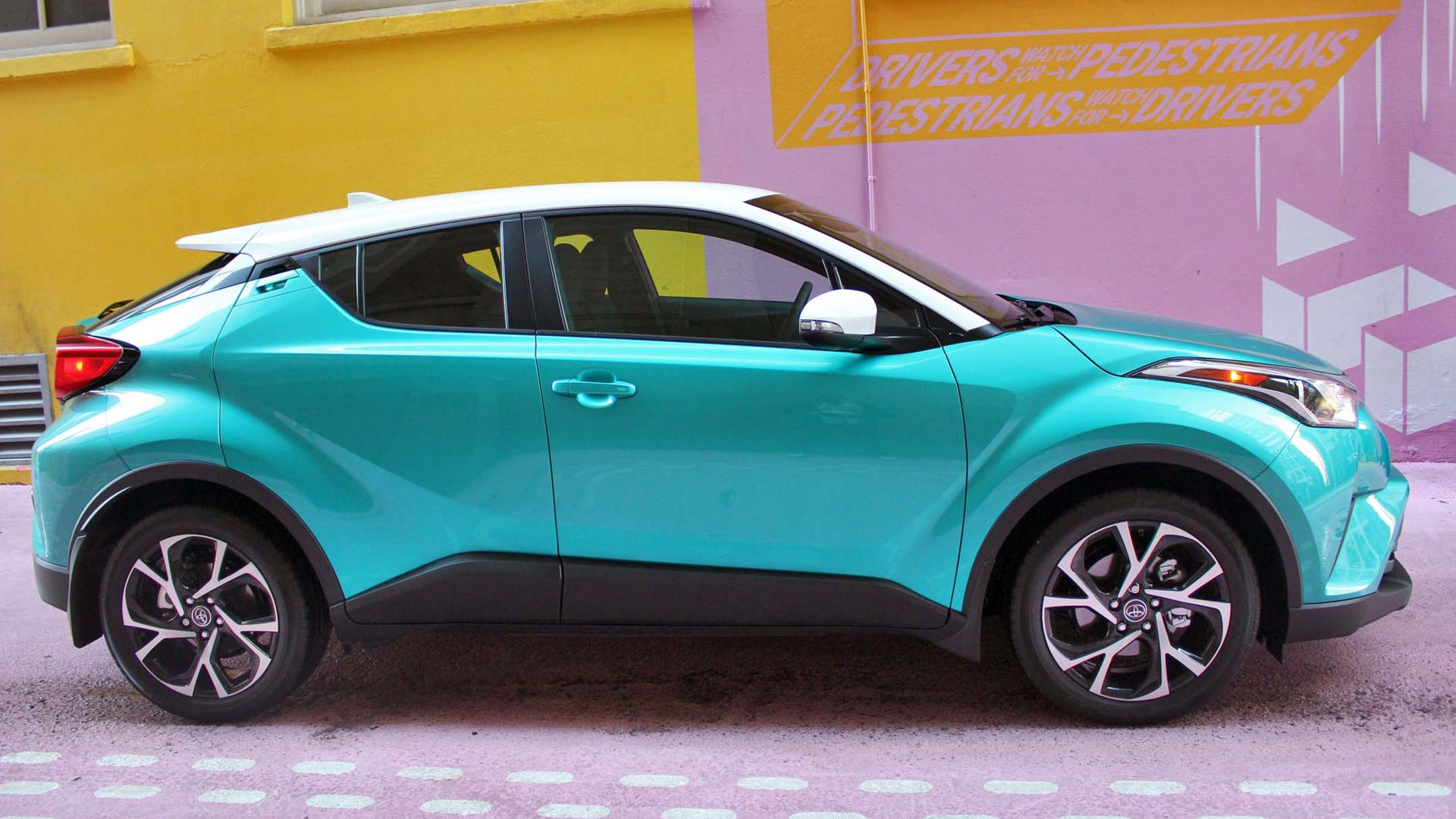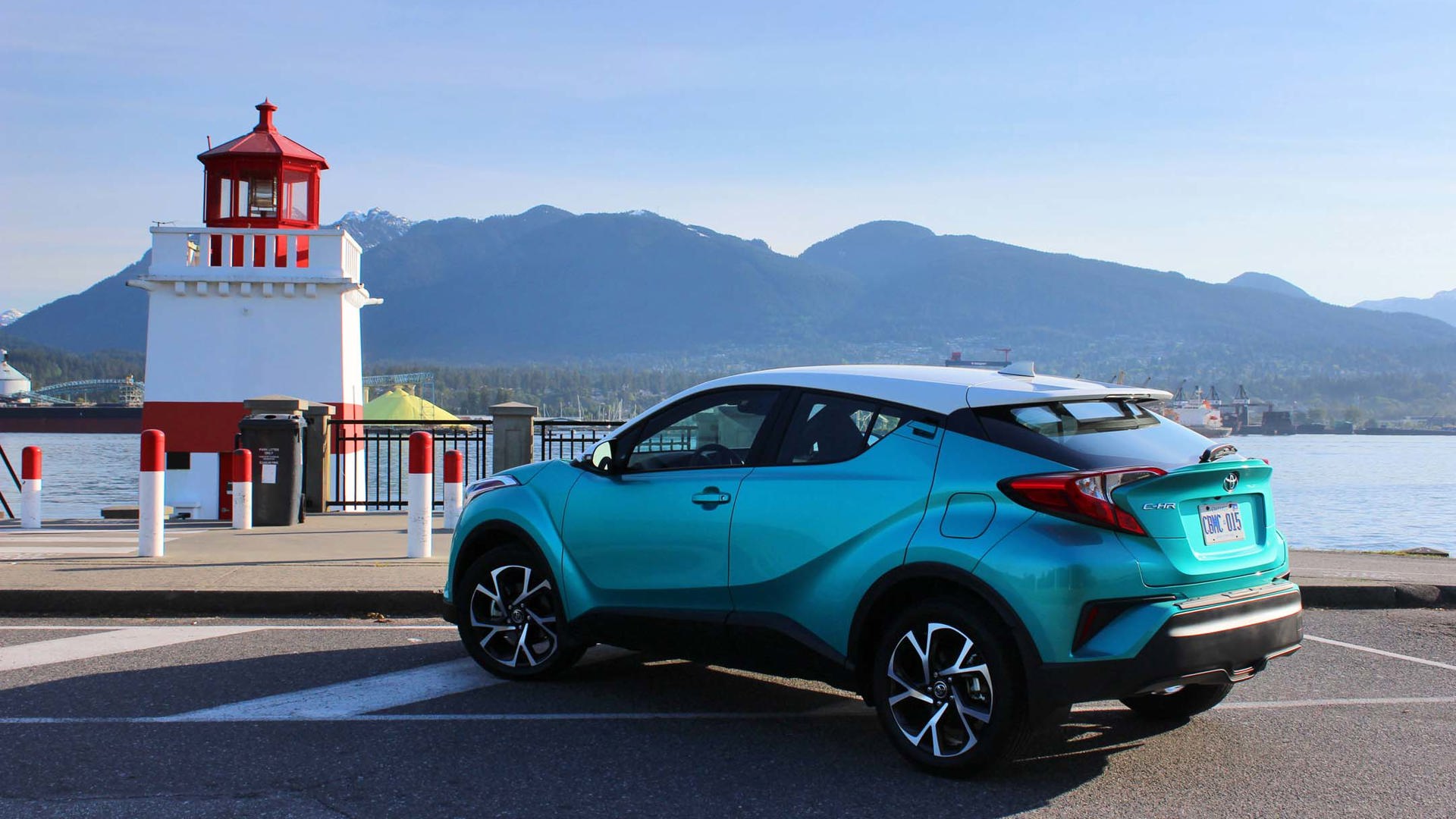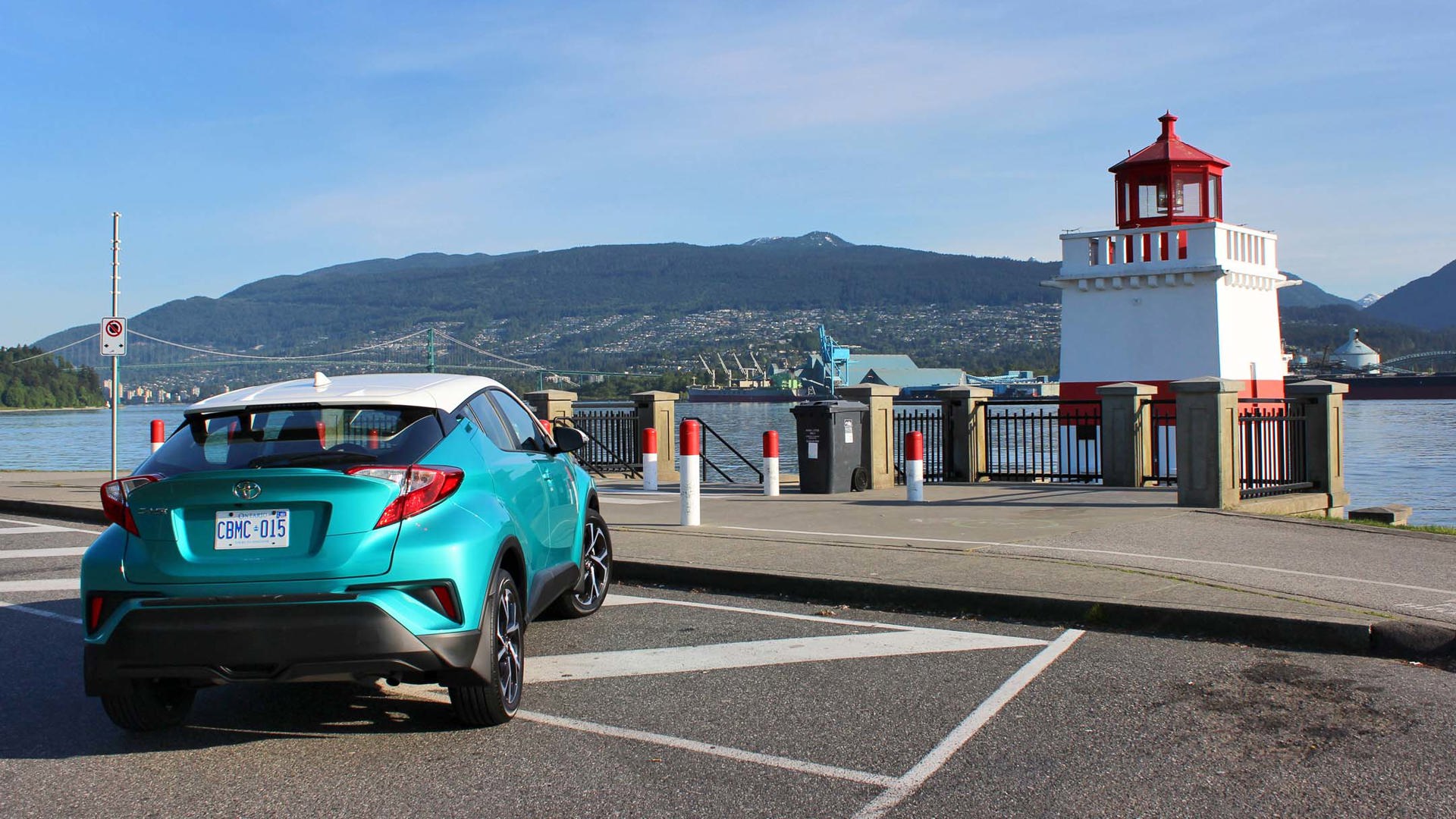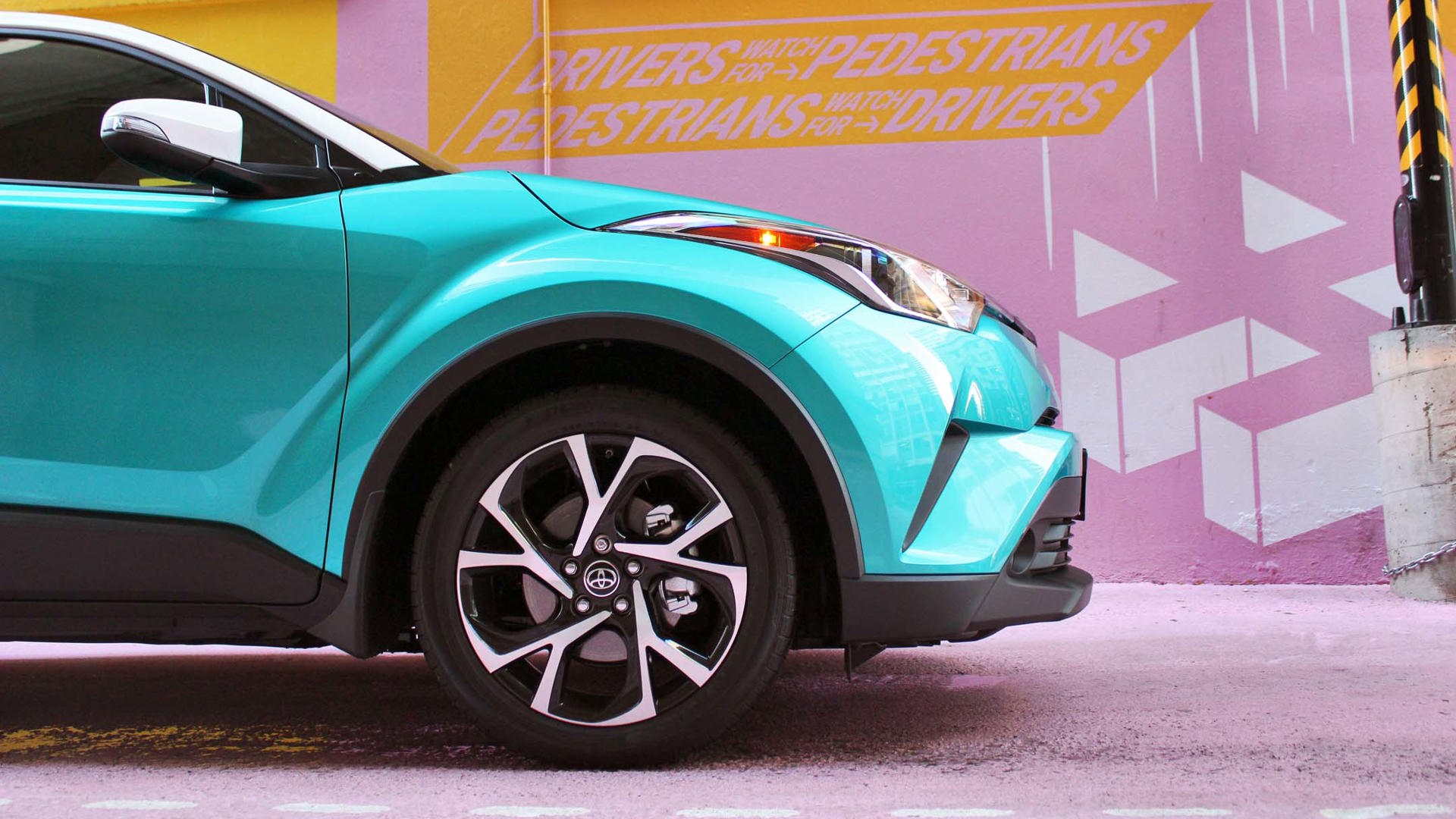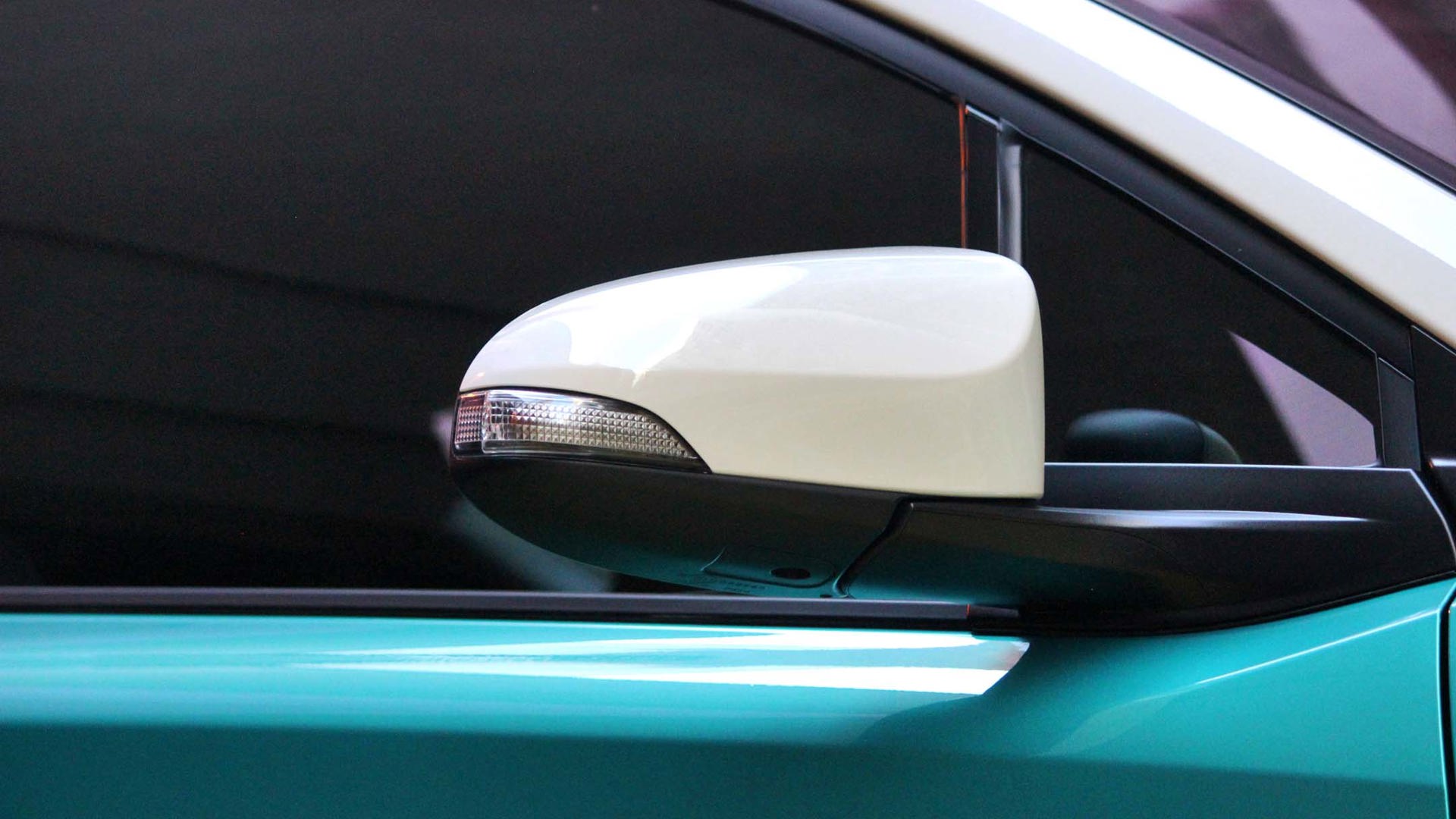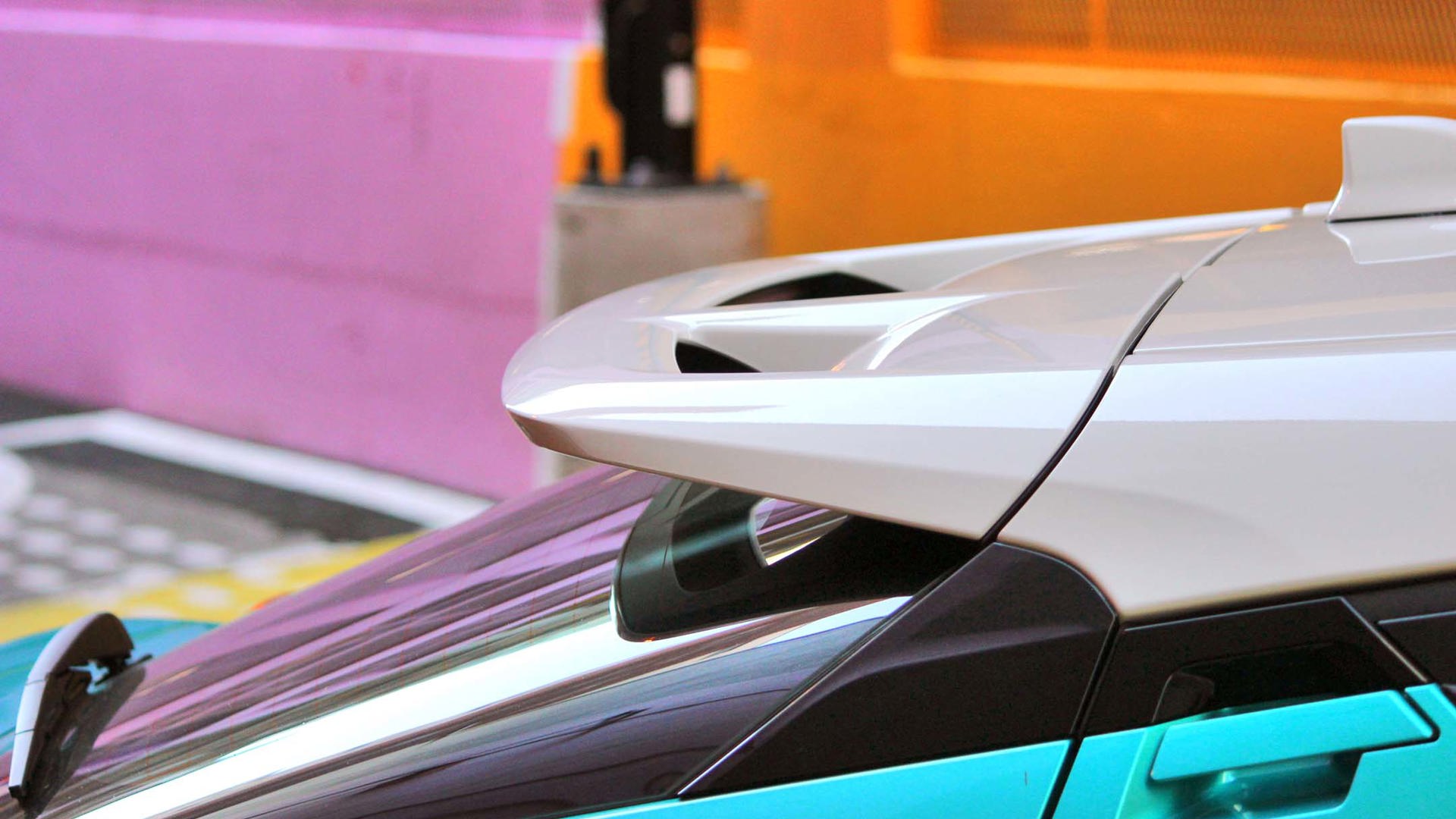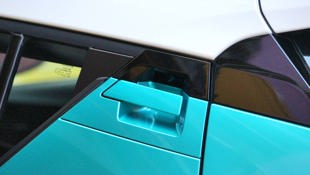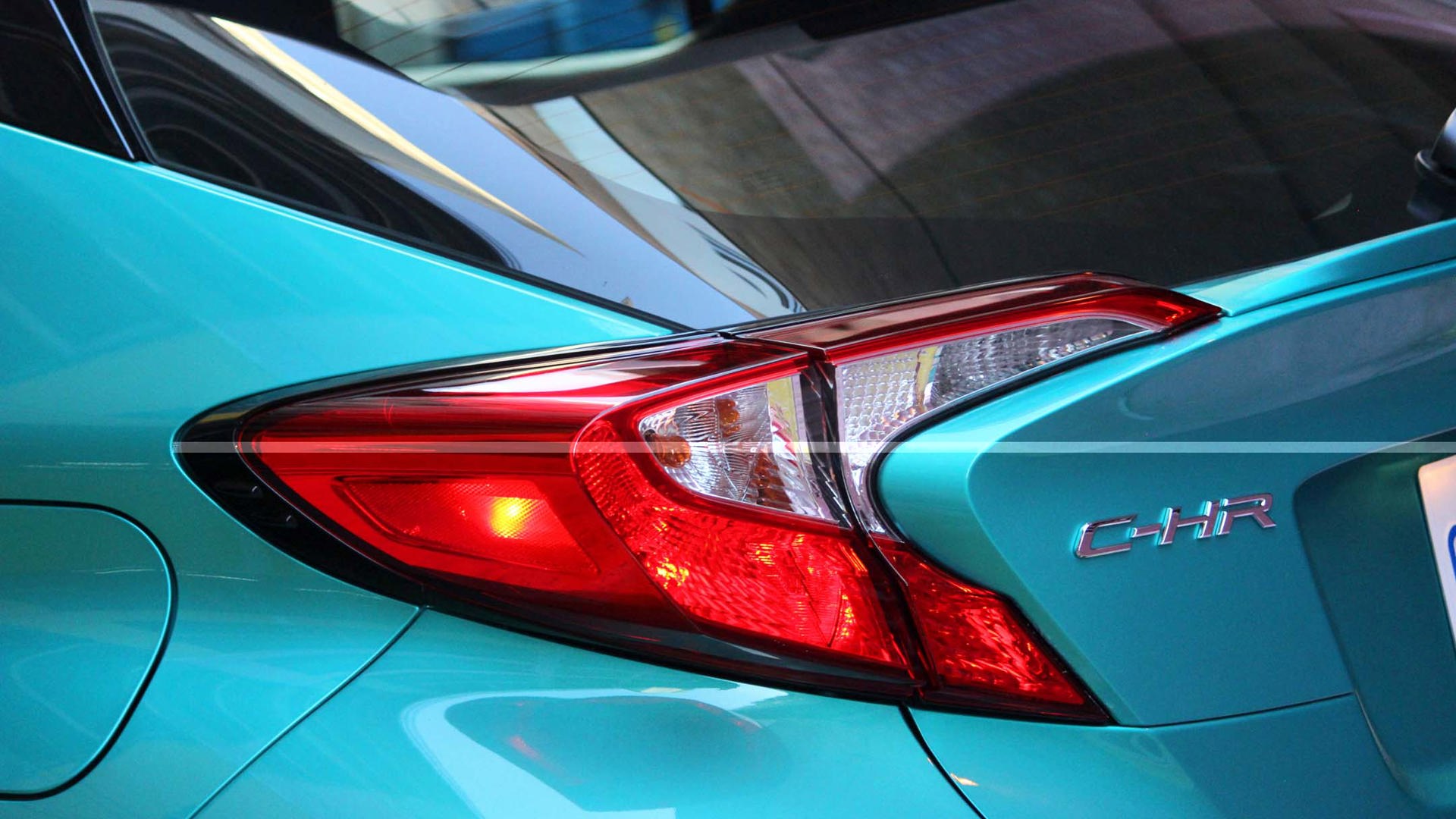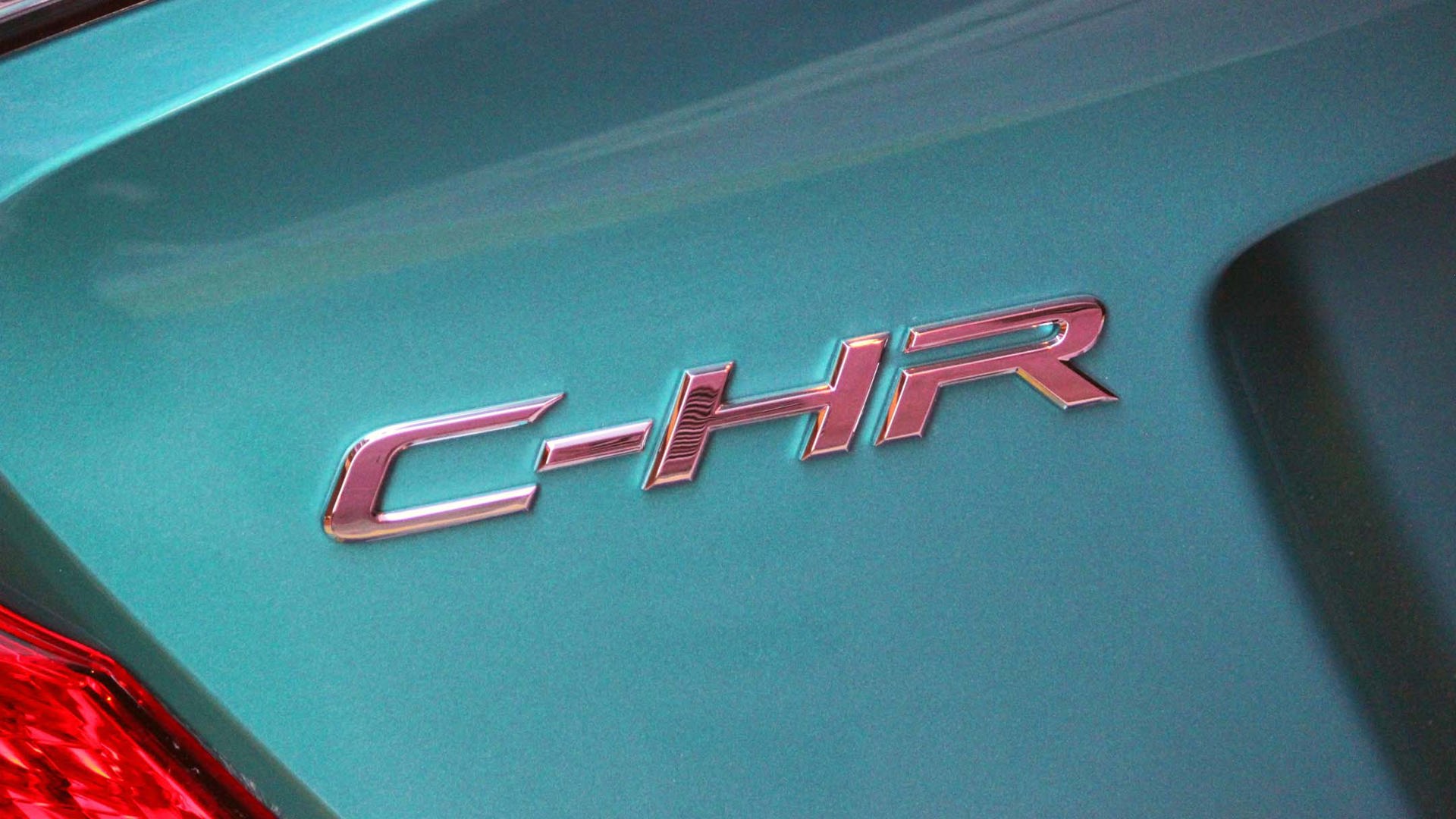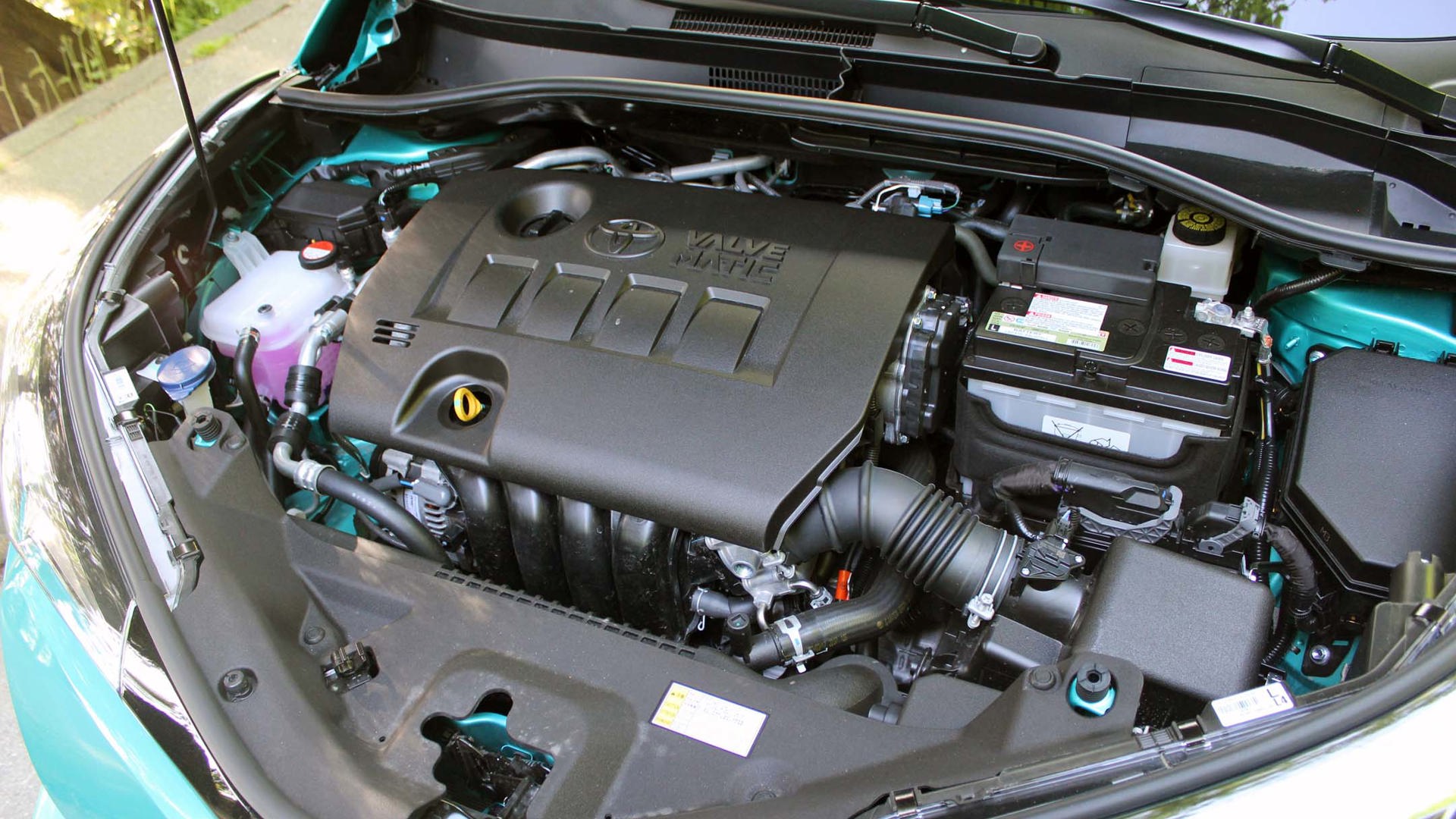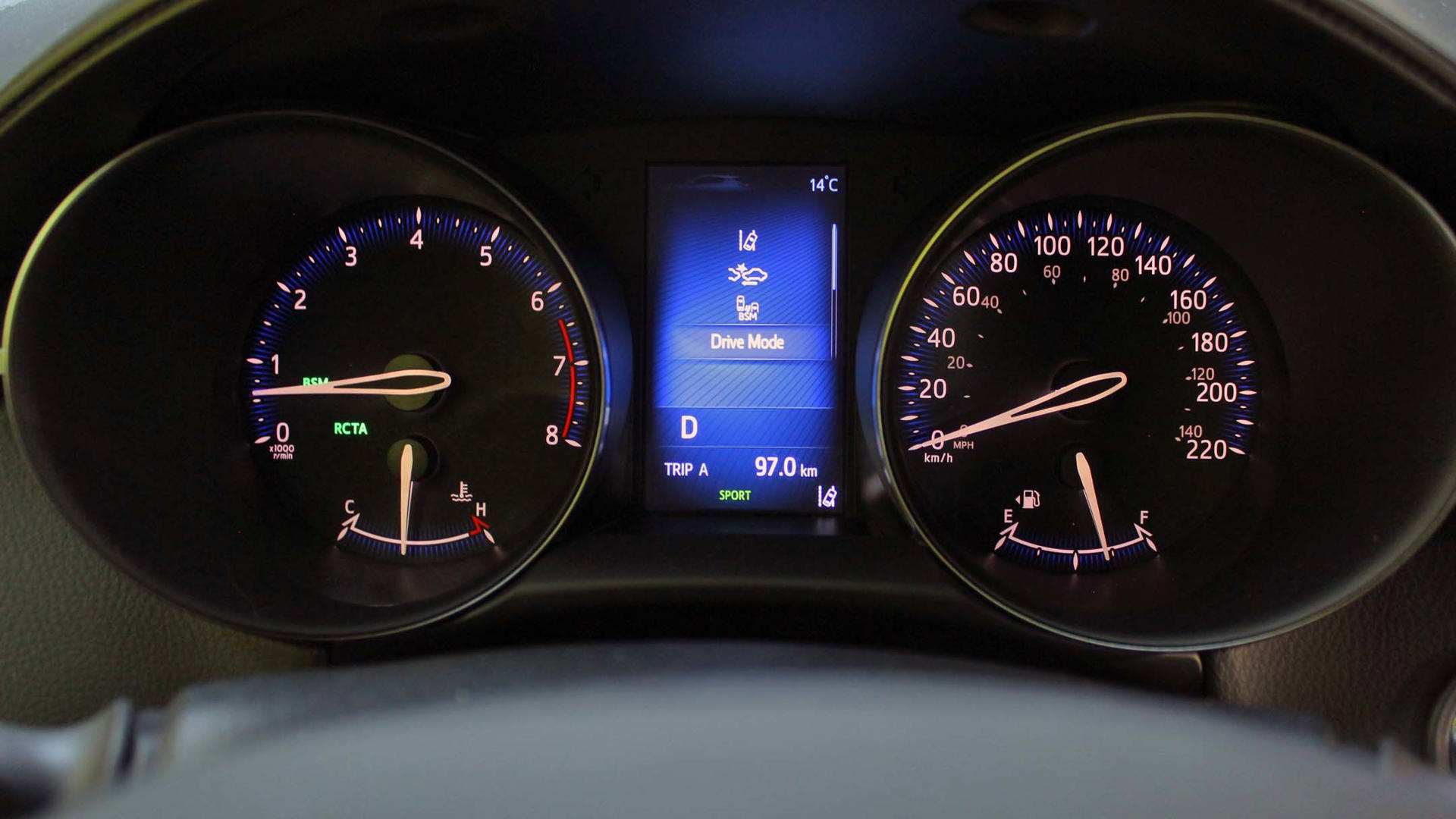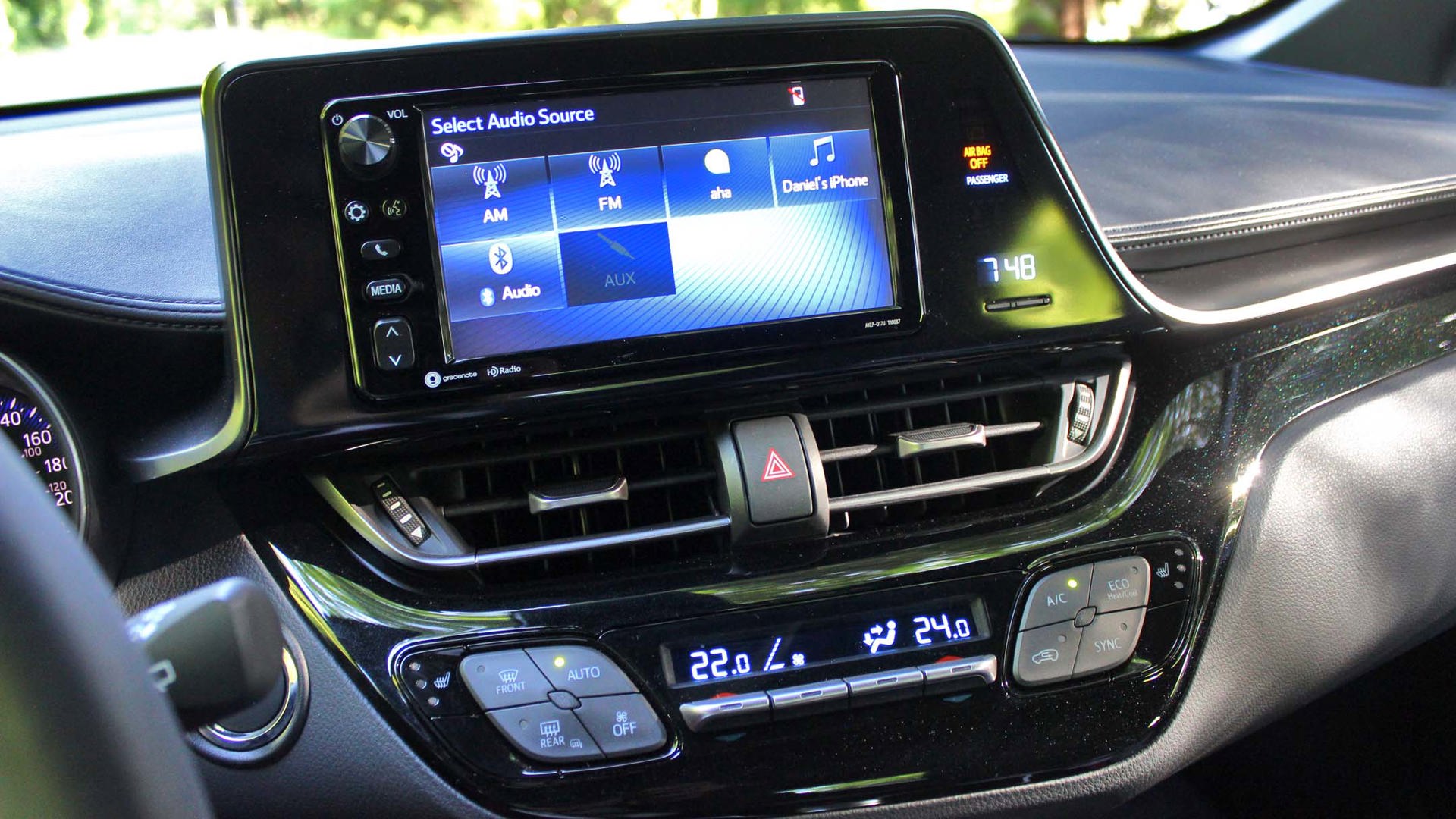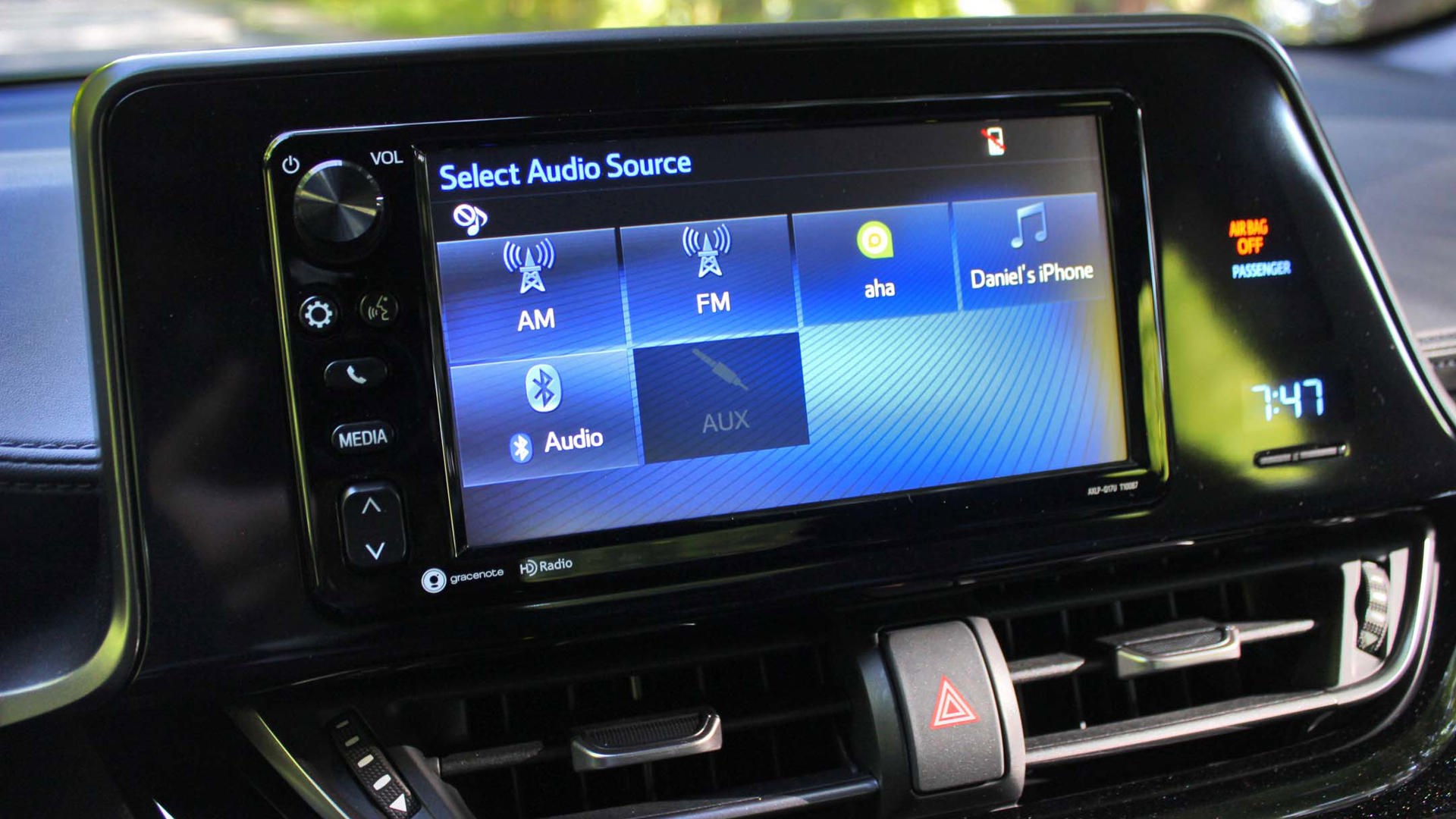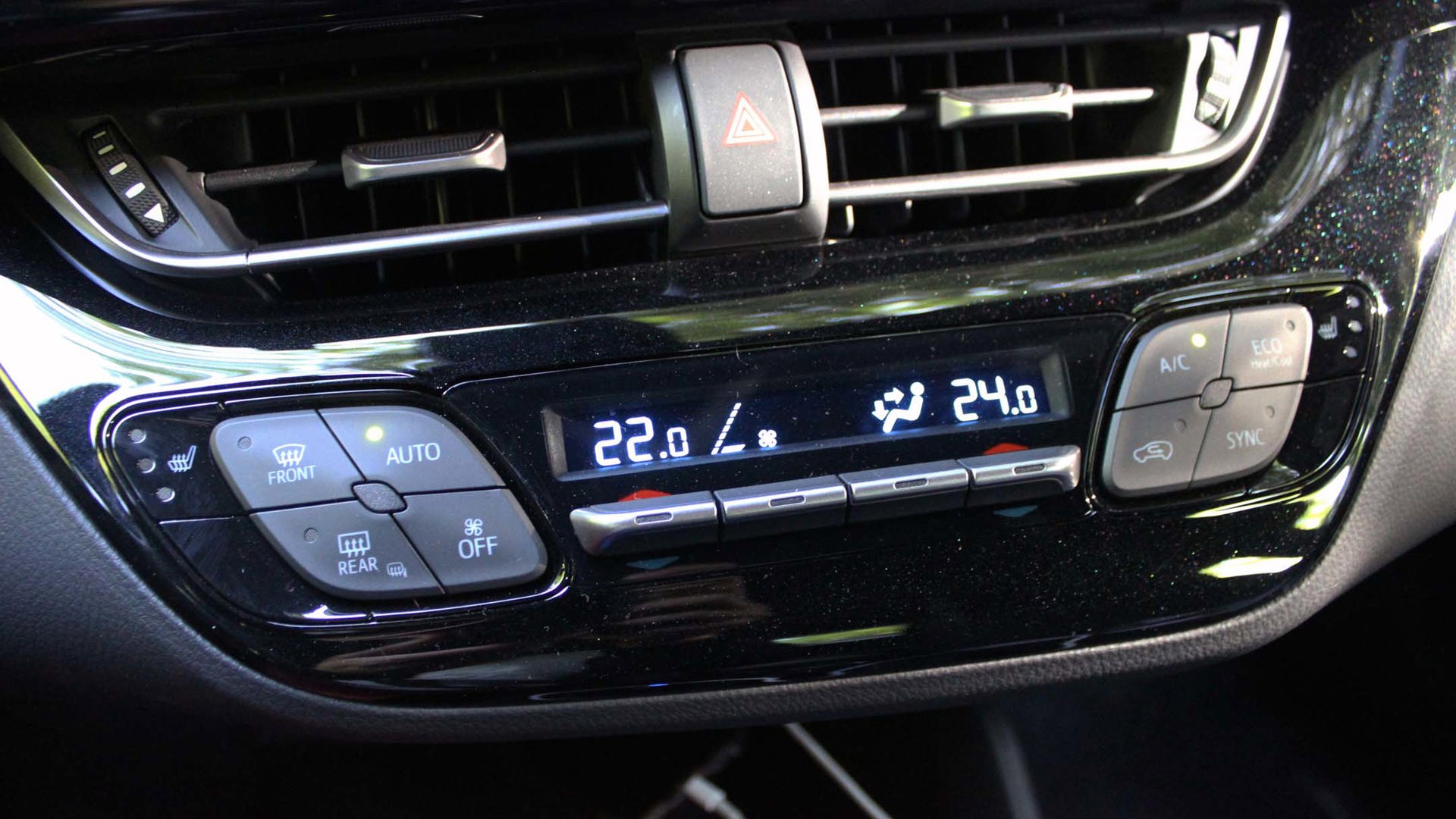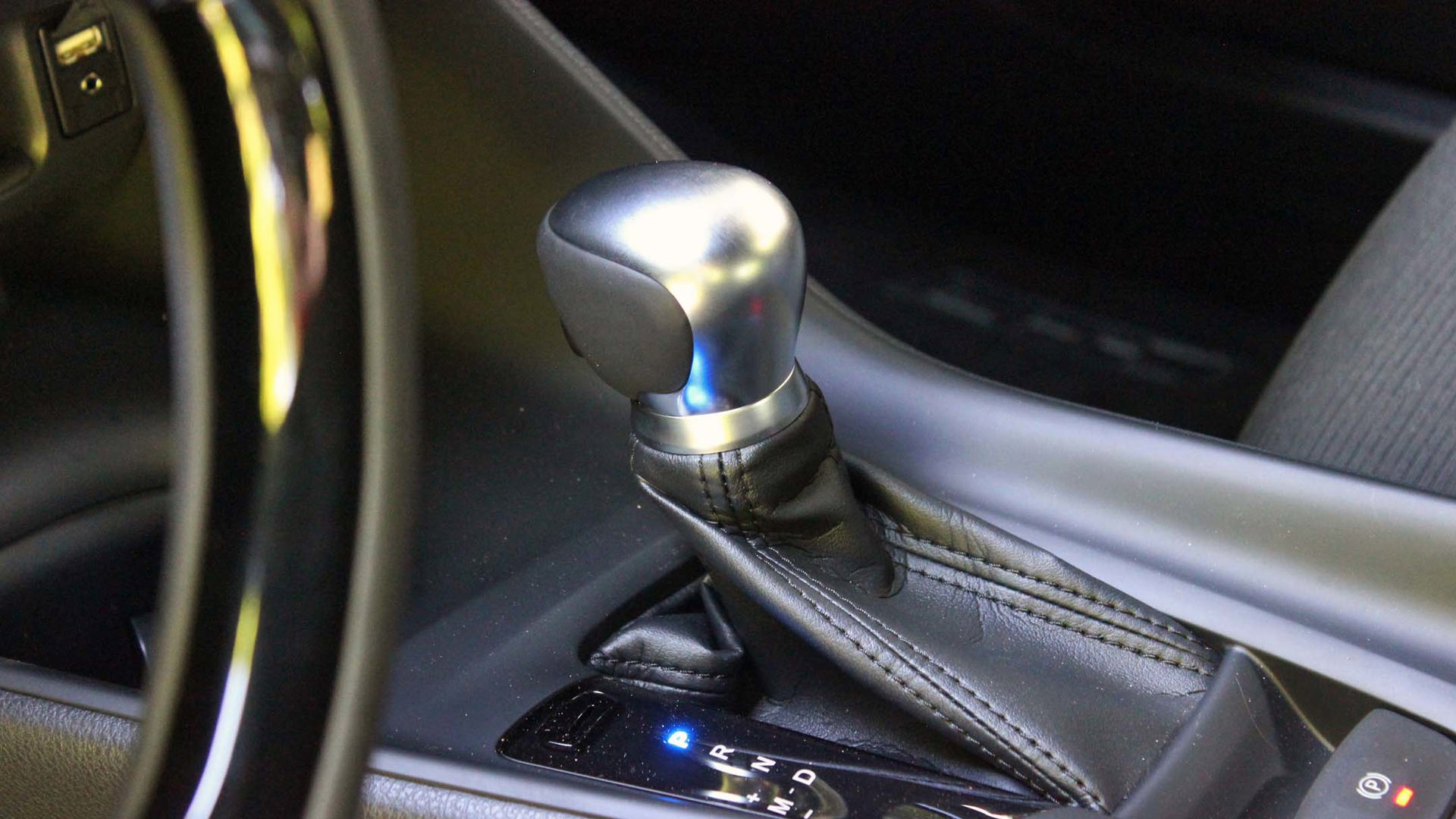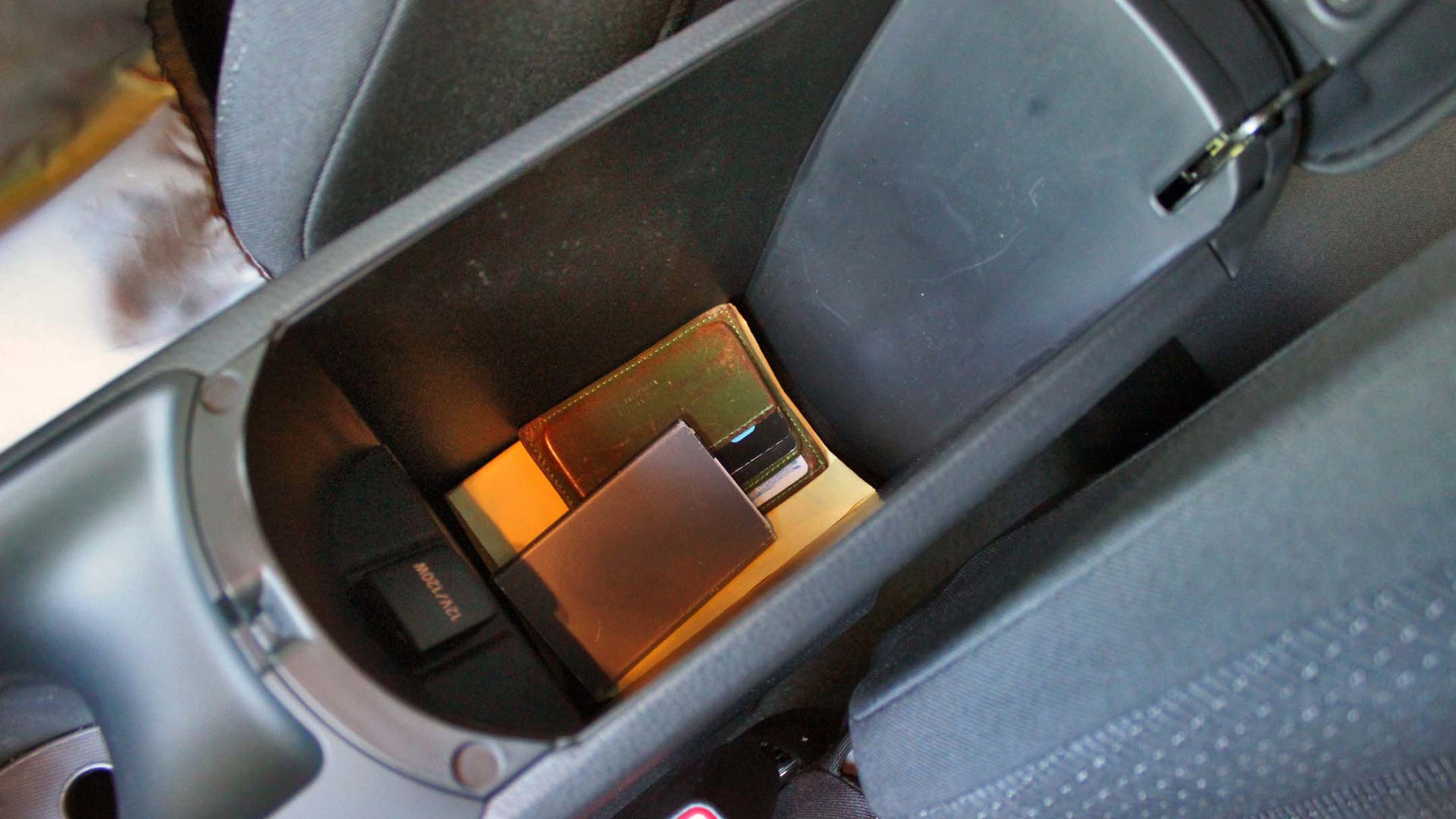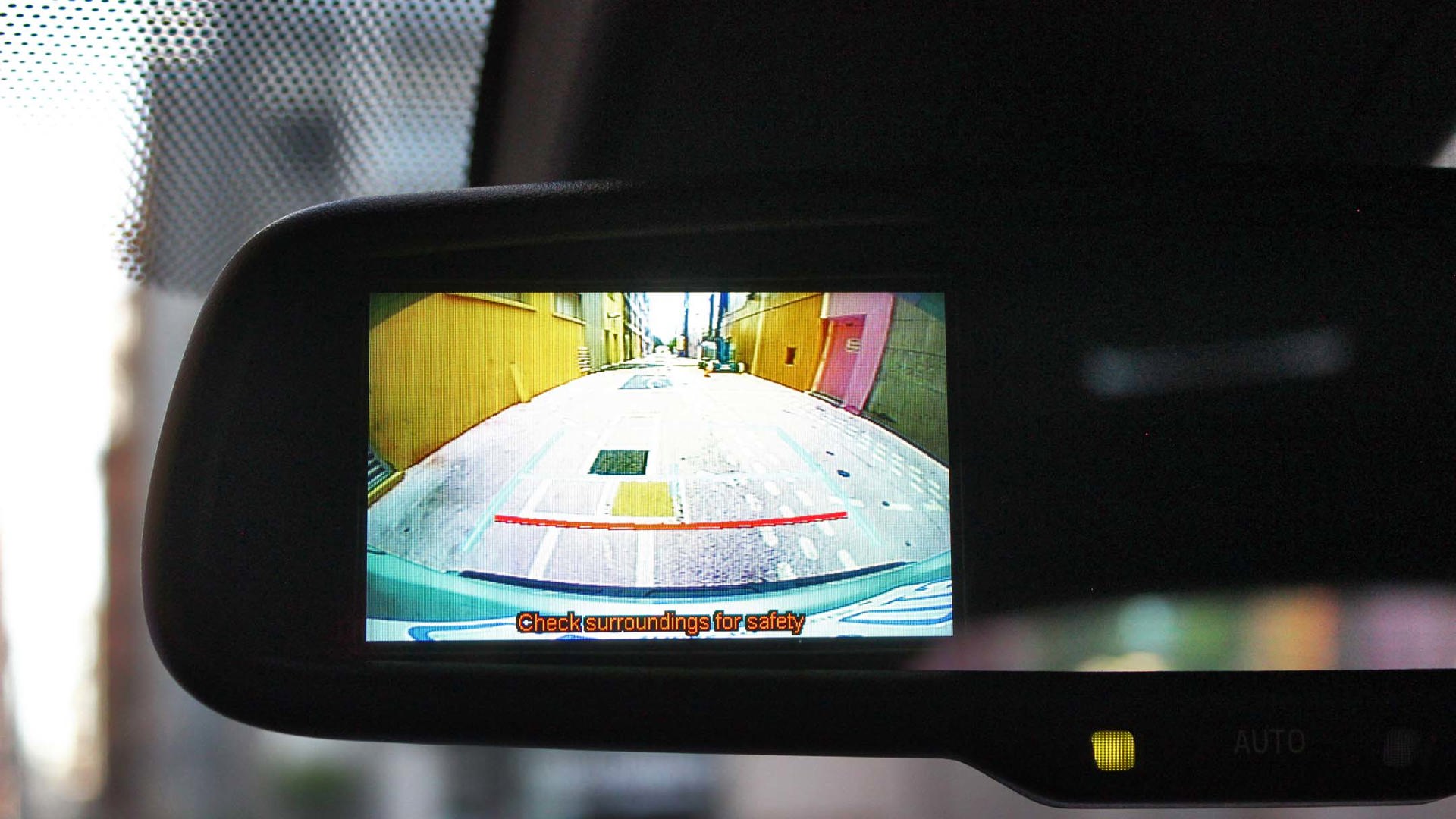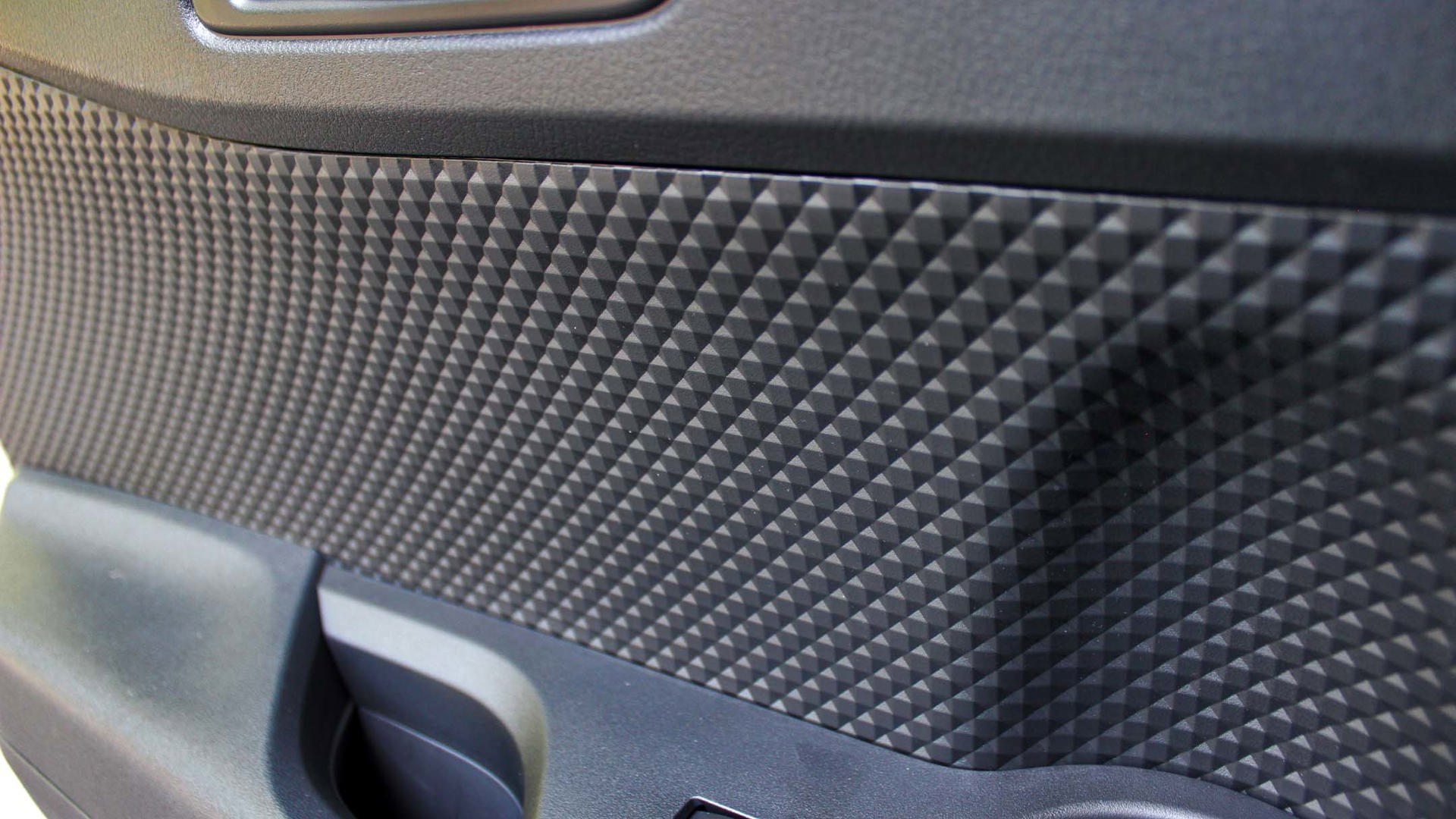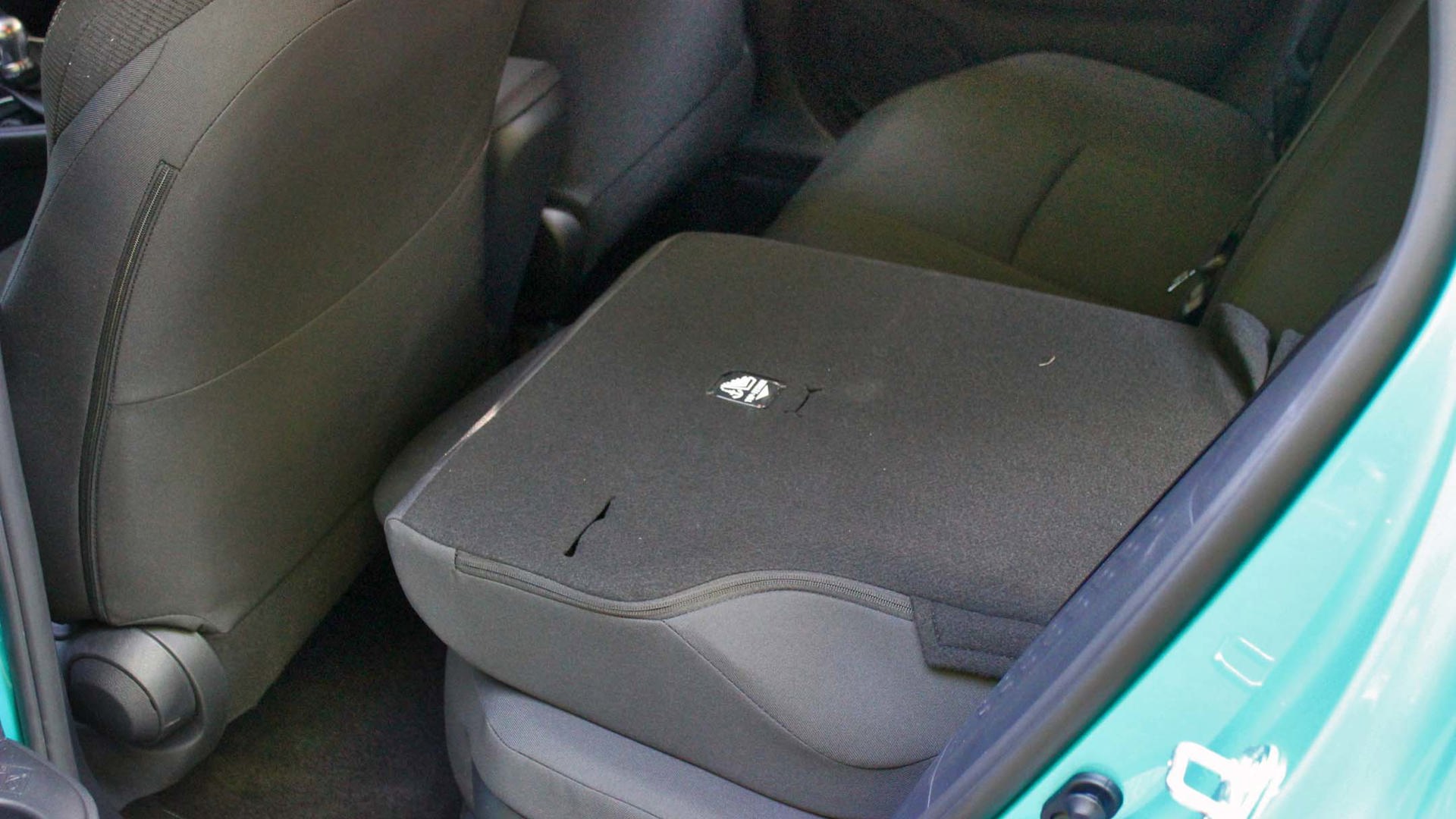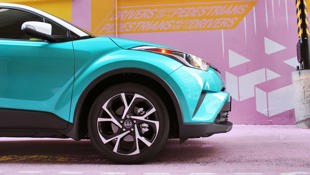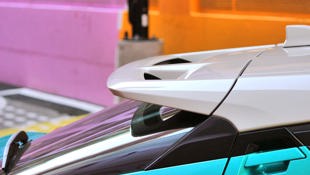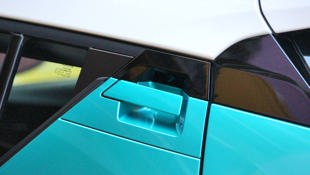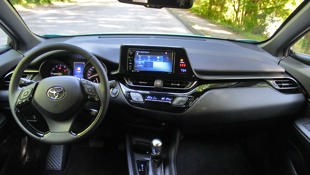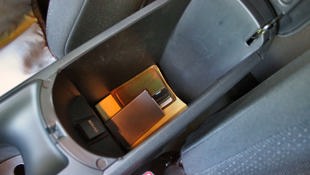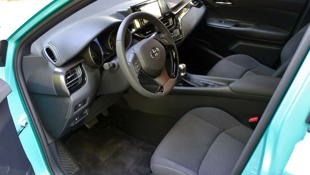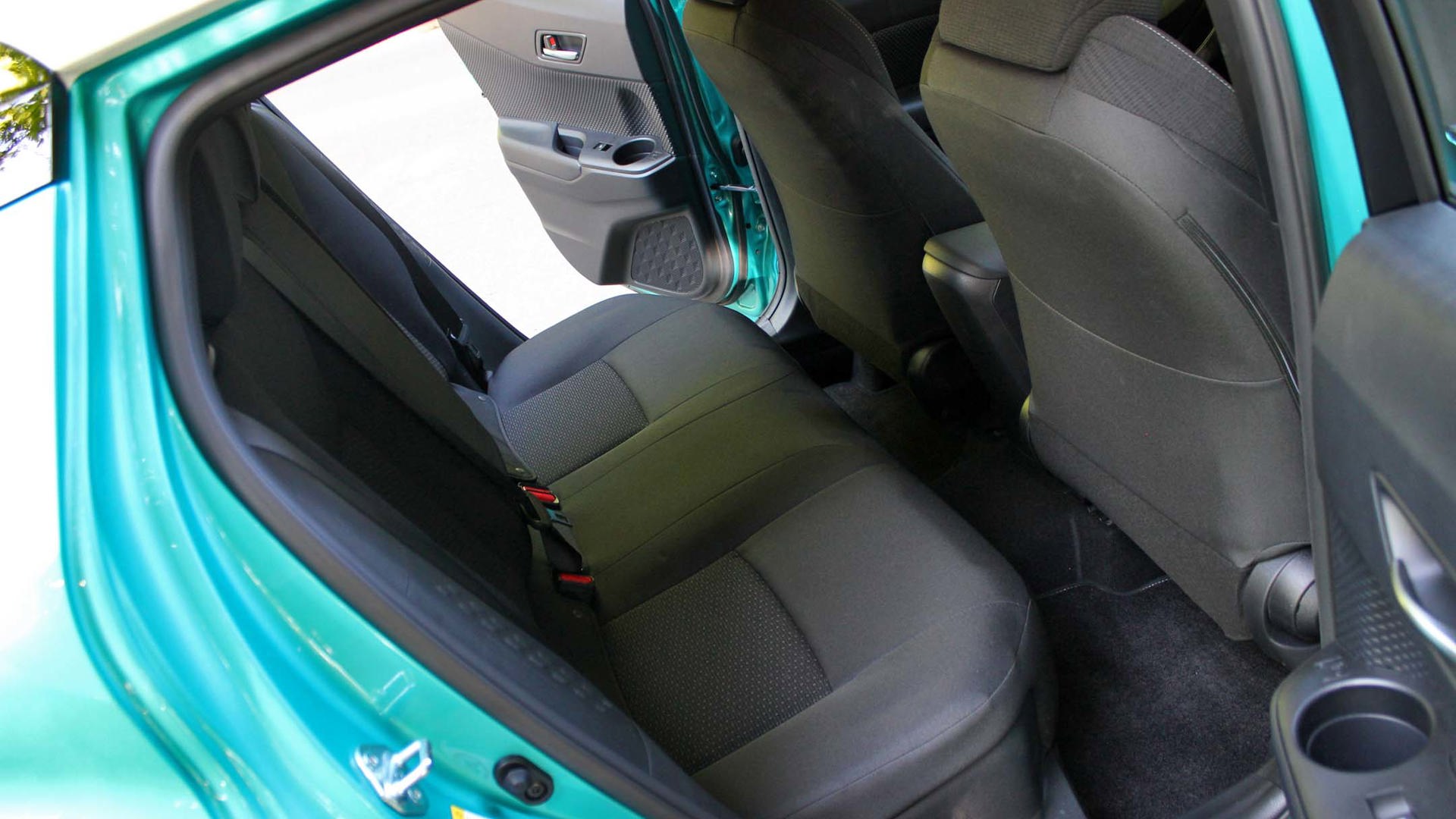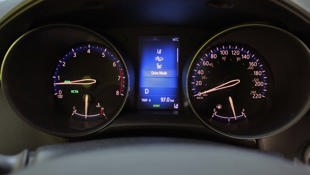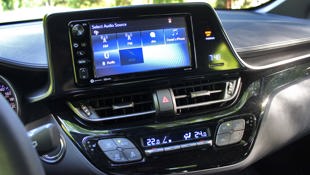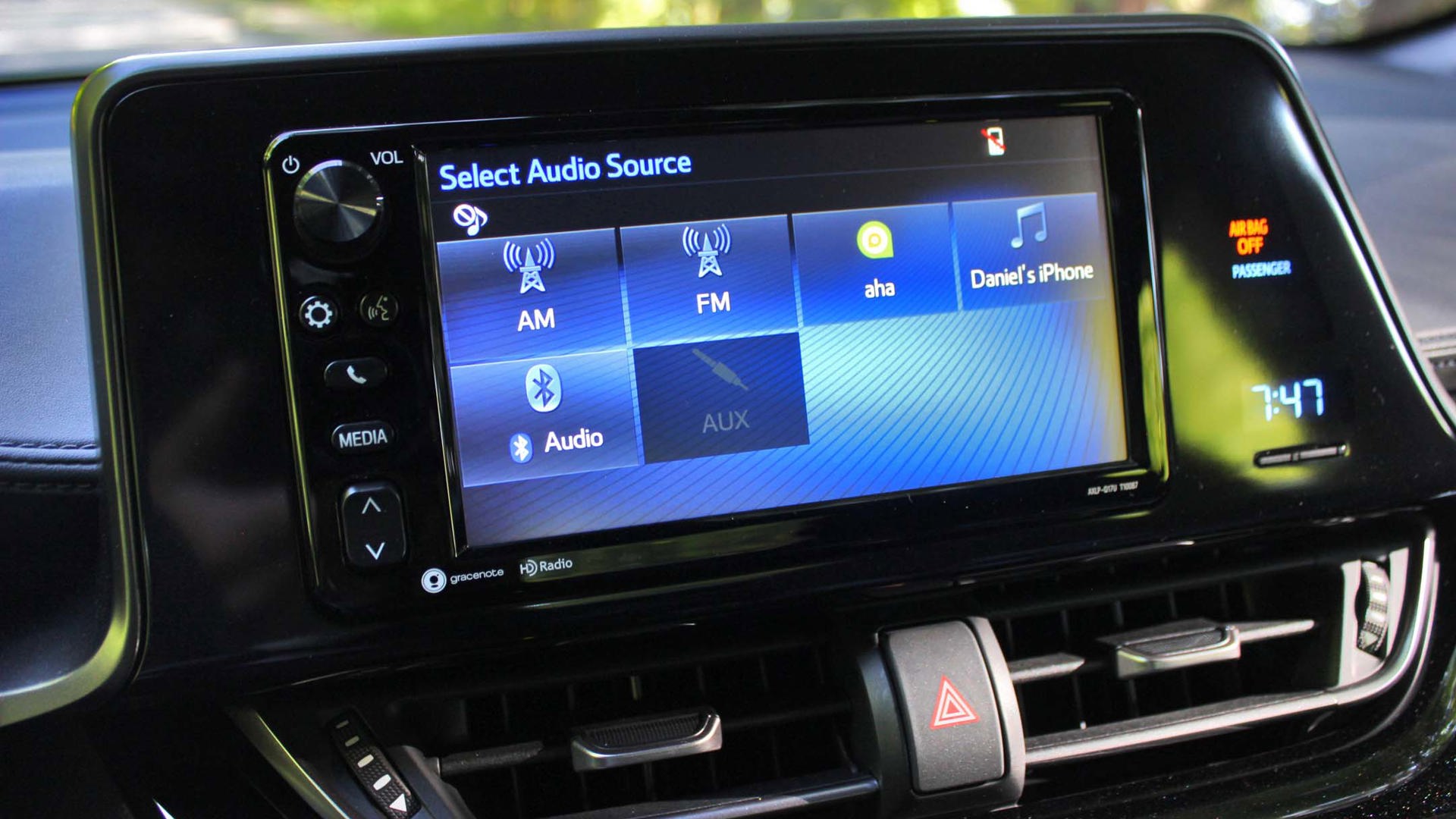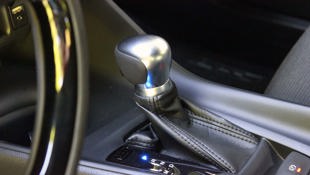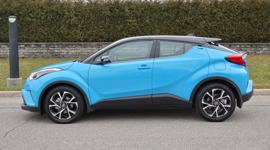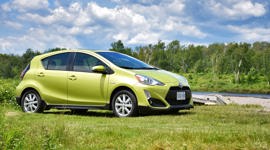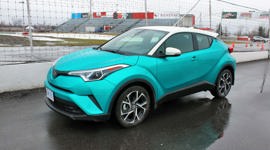 AutoTrader SCORE
AutoTrader SCORE
-
STYLING8/10
-
Safety7/10
-
PRACTICALITY6/10
-
USER-FRIENDLINESS7/10
-
FEATURES7/10
-
POWER6/10
-
COMFORT7/10
-
DRIVING FEEL7/10
-
FUEL ECONOMY8/10
-
VALUE8/10
On a recent procrastination-fueled trip through the interwebz (or was it the facebookz?), I came across a video of a couple of rappers listening to a freestyle track they’d laid decades prior, when their careers were in their infancy.
I mean, just look at it! It’s completely turned the brand on its head!
Part of the video had a graffiti artist (because rap video, right?) doing this funky graffiti of nothing in particular, really; it as the manner in which he was painting that was the real highlight, as he seemed to be painting with the beat, swirling neon spray paint with the beats in the background.
So what does all this have to do with Toyota’s latest crossover, the C-HR? Well, for starters, when I attended the world debut of the 2018 Toyota C-HR at the 2016 Los Angeles Auto Show, they brought a DJ along to spin some tracks, playing into the uber-urban vibe surrounding the “Coupe High Rider”, hence “C-HR”. The “Coupe” part comes from the way they’ve hidden the rear door handles in the C-pillar for a two-door effect. They don’t nail it quite as well as Nissan does with the Juke, but it’s not bad.
Secondly, the controlled chaos with which the video’s artist swirled his paint on his canvas reminded me very much of what Toyota seems to have done with the C-HR’s styling; all sorts of cuts and swathes this way and that, adventurous geometric shapes for the head- and taillights and bright colour choices that I would never, ever expect to see on a Toyota; heck, my car’s teal-and-white finish would look more at home on a ’55 Ford Fairlane – with an aftermarket candy paintjob. It will cost you an additional $540, however, as will the fantastic – fantastic – 18-inch two-tone wheels, which come as part of the $1,600 Premium Package that also provides a blind-spot system, push-button start, and puddle lights that project “C-HR” on the ground below each wing mirror.
Is it overdone? Many of my colleagues think so, but I stand firmly in the opposite corner. The Nissan Juke was overdone; the C-HR is more cohesive and sporty somehow, without having to fry your retinas to achieve its desired effect.
I applaud Toyota for having the stones to do something like this, something so different and so at odds with the big-selling, plain sedans and crossovers that have been – and continue to be – the brand’s bread and butter. But this – I mean, just look at it! It’s completely turned the brand on its head! What a fascinating shape and concept.
Ten years ago, this is what I thought cars would be looking like by now. You’d be right to think the C-HR’s styling recalls something from the recently deceased Scion brand; many thought that when the C-HR concept appeared in 2015, it should have been a Scion because it was so spectacular, that it would be just the ticket to rejuvenate the beleaguered brand. Unfortunately, Toyota must’ve already been reading the tea leaves, and the tea leaves said, “Nope. There’s no saving Scion. Better call this one a Toyota.”
The knee test
All that’s great, but this is a Big Guy, Small Car review so we have to get into the nitty-gritty of this thing. Has all that swoopy styling – especially the rear half of the roof and super-raked hatch – asked potential owners to make too much of a spatial sacrifice?
Upon climbing into the driver’s seat, the answer is actually a resounding “No!”
It may be a “high rider”, but after having folks of all shapes and sizes get in the front seats, reports had it working just fine for all of them.
Better still was how once behind the wheel; it really feels like you’re in a sporty hatchback of some stripe. I’m not going to say it feels like you’re in a Toyota 86 coupe, but I found myself saying, “Man, this just feels right,” on numerous occasions during my test. While the “high rider” side makes for a great view forwards, the “coupe” side makes for some smallish rear side windows and back window, meaning you’ll really want to ensure that you have your mirrors set right to reduce those pesky over-the-shoulder blind spots.
The blind spots are one thing, but those skinny windows are sat inside some pretty small rear doors, meaning the opening to the back seats is a tight one. All us six-footers – heck, even some just-below-six-footers – are going to have to watch our scalps getting in there.
Trouble is, no amount of ducking is going to help your knees in the back seat, as the official 805 mm of legroom figure seems generous, as does the 973 mm rear headroom number. It’s not a place I’d want to spend too much time, that’s for sure.
The hockey bag test
Better you fold those seats down, actually, as that’s what you’re going to have to do to fit much more than a piece of carry-on luggage back there. It’s not that the cargo floor is shallow; it’s just that the rear hatch has such a rake that the security cover will jam into it and stop it from closing if you even try to fit a slightly-too-tall piece of luggage back there. We found that not only did we have to flip the rear seats flat, we had to remove that tonneau cover entirely to get the bag in there. The liftover height is nice and low, though, which is a good thing.
The rest
Another big reason as to why they had brought a DJ along to the debut in LA was because according to Toyota’s presentation, the sound system and media interface on the C-HR would be a big attraction for buyers.
Well, yes and no. It’s got a 7.0-inch display screen as standard as well as six speakers for your listening pleasure. That’s good stuff, and the speakers are strong and make for some good, sharp listening. I’ve got no complaints there. The touch interface itself is responsive, but it doesn’t look any different than examples on other Toyotas; that’s a bit of an issue since this is supposed to be this great new urban-centric ride, and Toyota’s infotainment tends to lean a little more to the old-school side when you consider the fonts used, the graphics and the colour swatch; even the digital clock continues to look like something I had on my bedside table in high school. No big deal, but I was kind of hoping that we’d see something with a little more whizz-bangery going on; looks like we’re going to have to wait for the 2018 Camry, where Toyota will be debuting a new system.
One thing that isn’t displayed on the main screen is the back-up cam; the first time I selected reverse, I was befuddled as to how this could be. Turns out I was looking in the wrong place; it’s actually displayed within the near corner of rear-view mirror. It’s a neat trick and the display is high-resolution, but you will have to squint due to its size.
That’s all well and good, but even the new infotainment system won’t be addressing the other main issue I have with the C-HR’s infotainment: the lack of Apple CarPlay and Android Auto integration. Normally, I wouldn’t have too much of an issue with this, but in a car so aimed at hip urban buyers, its omission becomes all that much more glaring.
There’s also no navigation, so now you can’t use the maps app on your device via smartphone integration, and you can’t get a proprietary navigation system, either. Kind of missed a beat there, eh Toyota?
The rest of the tech the C-HR has to offer, however, is very good, especially in the electronic driver aids and safety departments.
For starters, Toyota Safety Sense comes as standard and it provides pre-collision warning system with pedestrian detection, adaptive cruise, and active lane-departure assist. That’s pretty good for a base model. Also nice is the standard inclusion of tilt/telescope steering wheel, dual-zone automatic climate control, heated front seats, power lumbar adjustment for the driver, and vertical adjustment for both driver and front seat passengers. While the C-HR may never have worn the Scion badge, Toyota seems to have adopted the Scion mantra of making the buying process as easy as possible by not offering a complicated array of options and option packages; that Premium Package we had is the only one on offer, and the only other option you can get this side of various dealer-installed stuff like a rear cargo net or roof rack is the variety of two-tone paintjobs. I like that.
Let’s hit the road
You get even less choice in the powertrain department, which is limited to a grand total of one: a 2.0-litre four cylinder with a CVT transmission and front-wheel drive. Yes, you read that right: there is no AWD option for this compact crossover, unlike every single one of its competitors listed below save the Kia Soul. Which, as it happens, starts at less than the C-HR by over seven grand, $4,500 if you spec an auto in your Kia.
So why is this? Why the omission? Toyota maintains that while the car the C-HR effectively replaces – a few years late, mind – in the line-up, the Matrix, was available with both AWD and FWD, most opted for the latter. They saw little need, then, for an AWD version of the C-HR. Of course, that was their story in November; you have to think the similarly sized but AWD-equipped FT-4X concept – which debuted at the New York International Auto Show five months later in April – is the real reason the C-HR won’t get AWD; too many cooks in the kitchen and all.
Still though, when the Matrix was around, it was popular because it was a fairly unique body style, especially in North American markets where the high-roofed hatchback hadn’t yet quite made the splash it had in Europe. Now, however, that’s no longer the case and I think C-HR sales will suffer because of it, especially in Canada where AWD is king.
Having said that, of all the competition – with the exception, perhaps, of the Mazda CX-3 – the C-HR is the most hatchback-looking. And how many AWD hatches can you name, this side of hi-po expensive stuff like the VW Golf R or Ford Focus RS? The Subaru Impreza – that’s it. And that just might be where the C-HR carves out a niche of its own; you can bet that Toyota is hoping so. Maybe, just maybe, there will be folks that love the idea of having the dynamics (and image) of a hatch, but with the added practicality of a subcompact crossover.
Power is rated at 144 hp and 139 lb-ft of torque. That puts it right in the thick of the competition, up on the Honda HR-V but down a little on the CX-3 and down 16 hp and 45 lb-ft on the Fiat 500X/Jeep Renegade twins. A turbocharger may have been a nice add for the C-HR, but the naturally aspirated engine does get the C-HR up and moving in quick fashion, perfect for squeezing through gaps in rush-hour traffic and the like.
Where you really start to feel the power squeeze is when you start reaching higher freeway speeds, where passing becomes a little more sweat-inducing than it would with just a little turbocharged oomph to really ensure that semi gets left in your dust, and quickly.
The transmission, of course, doesn’t do all that much to help you in this regard. CVTs are, for the most part, less than conducive to any modicum of performance driving, such is the nature of their operation. There are a few exceptions – the Subaru WRX, for example – but the C-HR isn’t really one of them. Better make sure you’ve left yourself some space on the highway.
The ride and handling, however, is a different story altogether. You get MacPherson struts up front and a dual-wishbone set-up at the rear, and the two work together in unison with the traction and stability control to offer a compelling, confidence-inspiring ride. Turn-in is properly quick and body roll nicely checked, yet somehow it isn’t crashy over bumps. Which, of course, is important for the urban environment in which the C-HR is meant to excel. Which it does – heck, I wanted to spend more time on some curves, so enticing was the handling package. It really is hot-hatch-like, and befitting of that nice, low seating position I spoke about earlier. The CVT also makes for smoother progress around town, which I can get on board with.
So if you’re of taller ilk…
You will have no problem at the pilot’s post, that’s for sure. It’s nicely roomy up front in the C-HR, and as long as you don’t plan on shuttling four adults around, it’s a very usable car even for the long-limbed among us.
Upon seeing my tester in all its teal ’n’ white glory, I was actually quite smitten, and was really looking forward to the drive. It looked fast. It looked fun-to-drive. Above all, even now in the wild, it looked like the funky urban warrior Toyota had proclaimed it to be under the show lights in LA. On looks alone, I was thinking that I was about to drive a top-class contender.
After driving it for the better part of week, I found that while I still loved its looks, it needed a little something more to push it over the top. That something? Put simply: more power, and also the availability of a manual transmission. If you aren’t going to give us AWD, then at least go whole-hog-hatch-on-stilts and give us a manual option to really get that feeling. You still have the looks, the generous front seat space and good view out (well, forward and out), but with a nice slick-shifting manual box (Could the version found in the RWD 86 work here? Not likely, given the difference in layout and engine, but still.... a manual would be nice). At least some paddle shifters – the CVT does have a manual mode – would add another nice notch to the C-HR’s belt, one that may even have me forget the power thing.
Alas, this is a vehicle made for city-dwellers, so that’s likely not going to happen. The good news is that if you really want your Toyota subcompact ute to have AWD digs, you can wait for the production version of the FT-4X; Toyota has reportedly trademarked the “TJ Cruiser” name, a perfect fit for a production FT-4X, whose concept was inspired by the FJ40 Land Cruisers of old.
| Engine Displacement | 2.0L |
|---|---|
| Engine Cylinders | 4 |
| Peak Horsepower | 144 hp |
| Peak Torque | 139 lb-ft |
| Fuel Economy | 8.7/7.5/8.2 L/100 km cty/hwy/cmb |
| Cargo Space | 1,031 L |
| Model Tested | 2017 Toyota C-HR |
| Base Price | $24,690 |
| A/C Tax | $100 |
| Destination Fee | $1,760 |
| Price as Tested | $28,690 |
|
Optional Equipment
$2,140 – Premium Package (Push button start, smart key system, puddle lamps, power folding mirrors, blind spot monitor with rear cross traffic alert, 18” wheels) $1,600; two-tone paint $540
|
|
